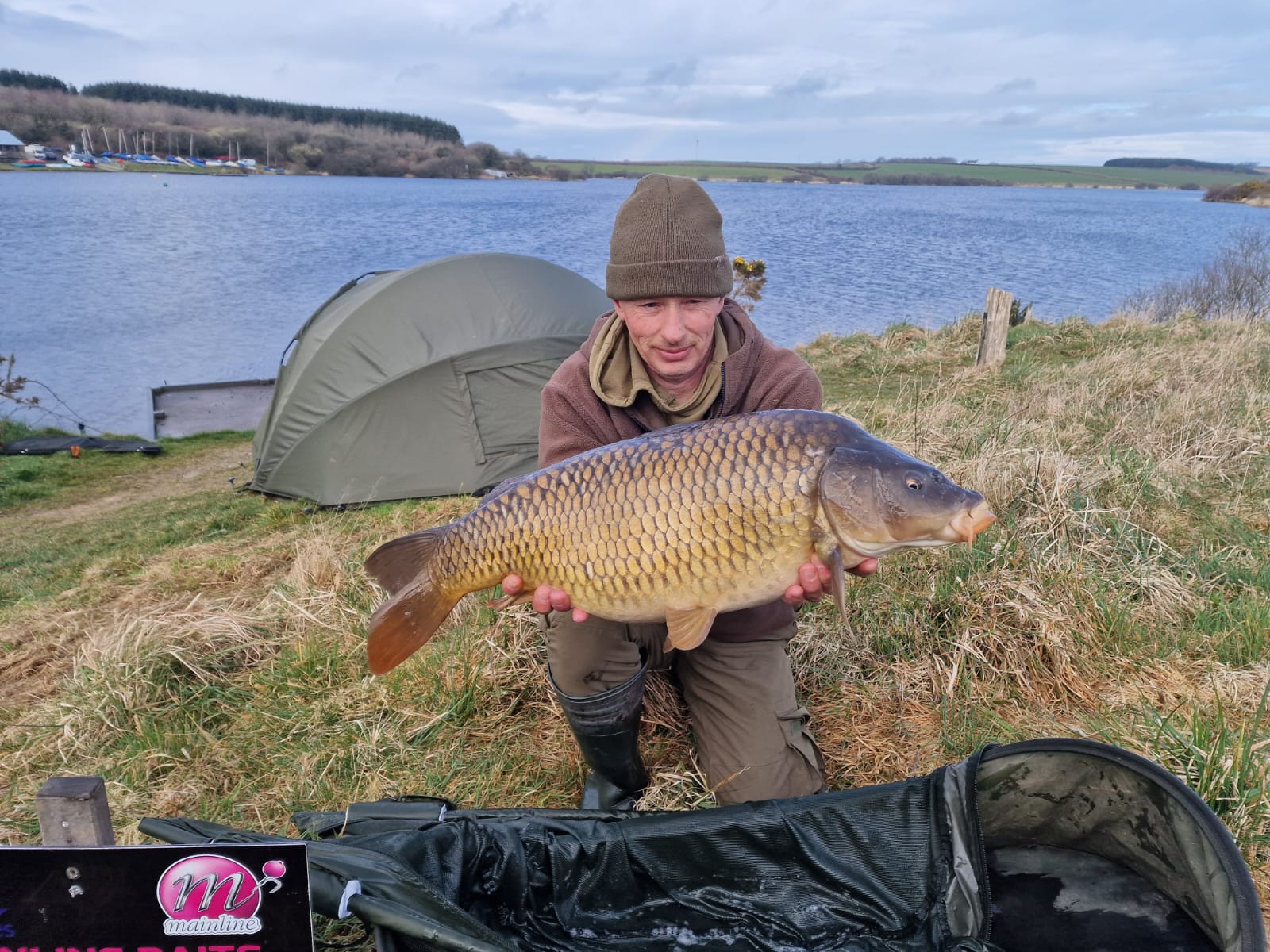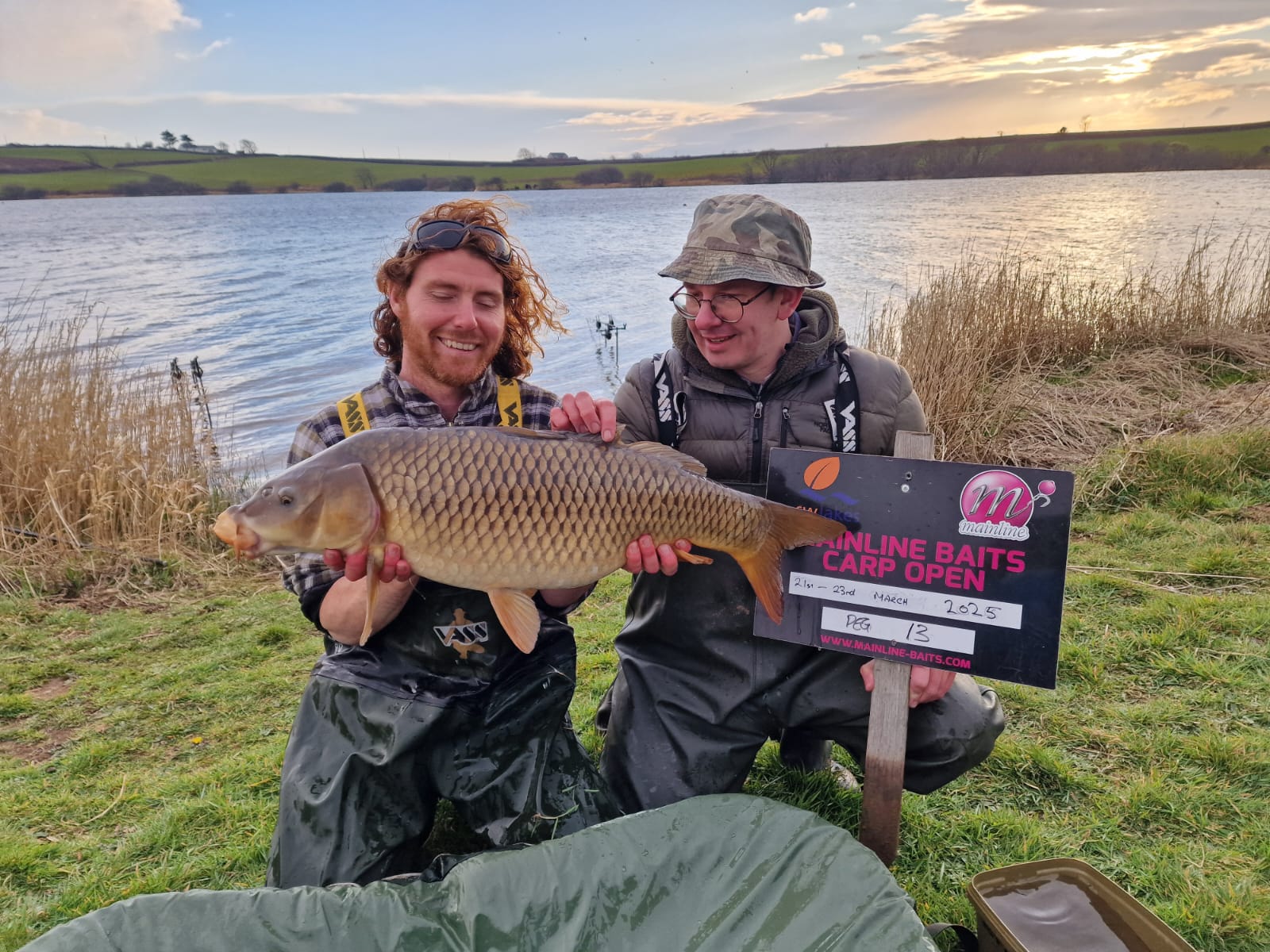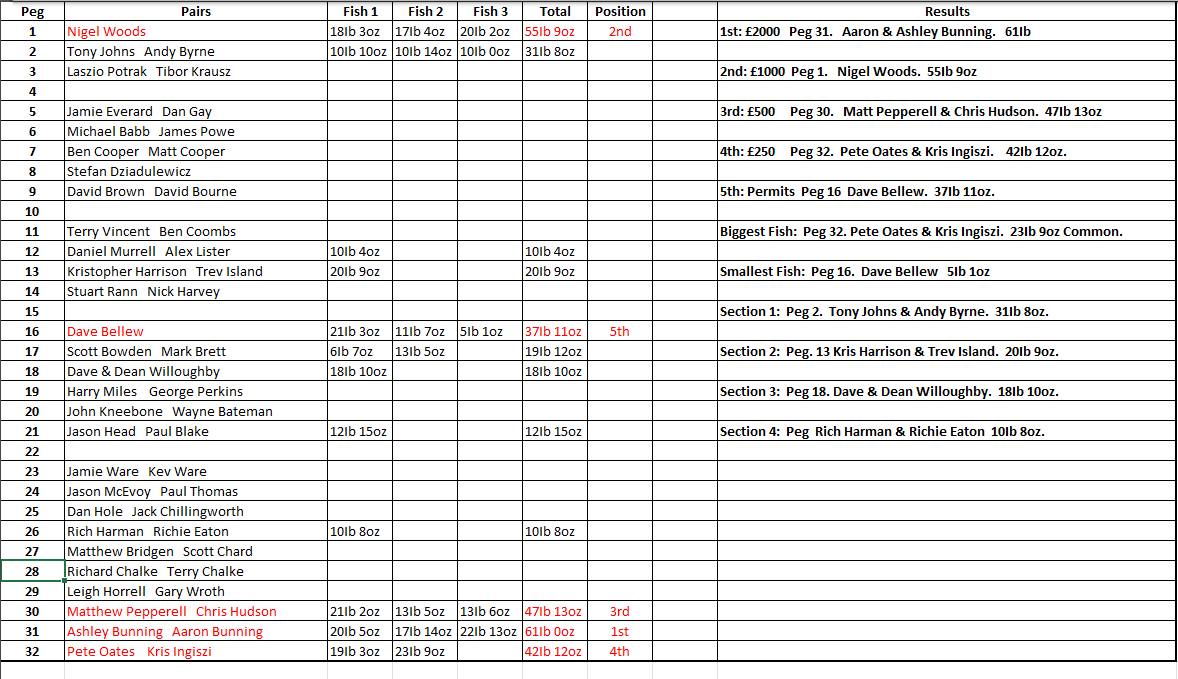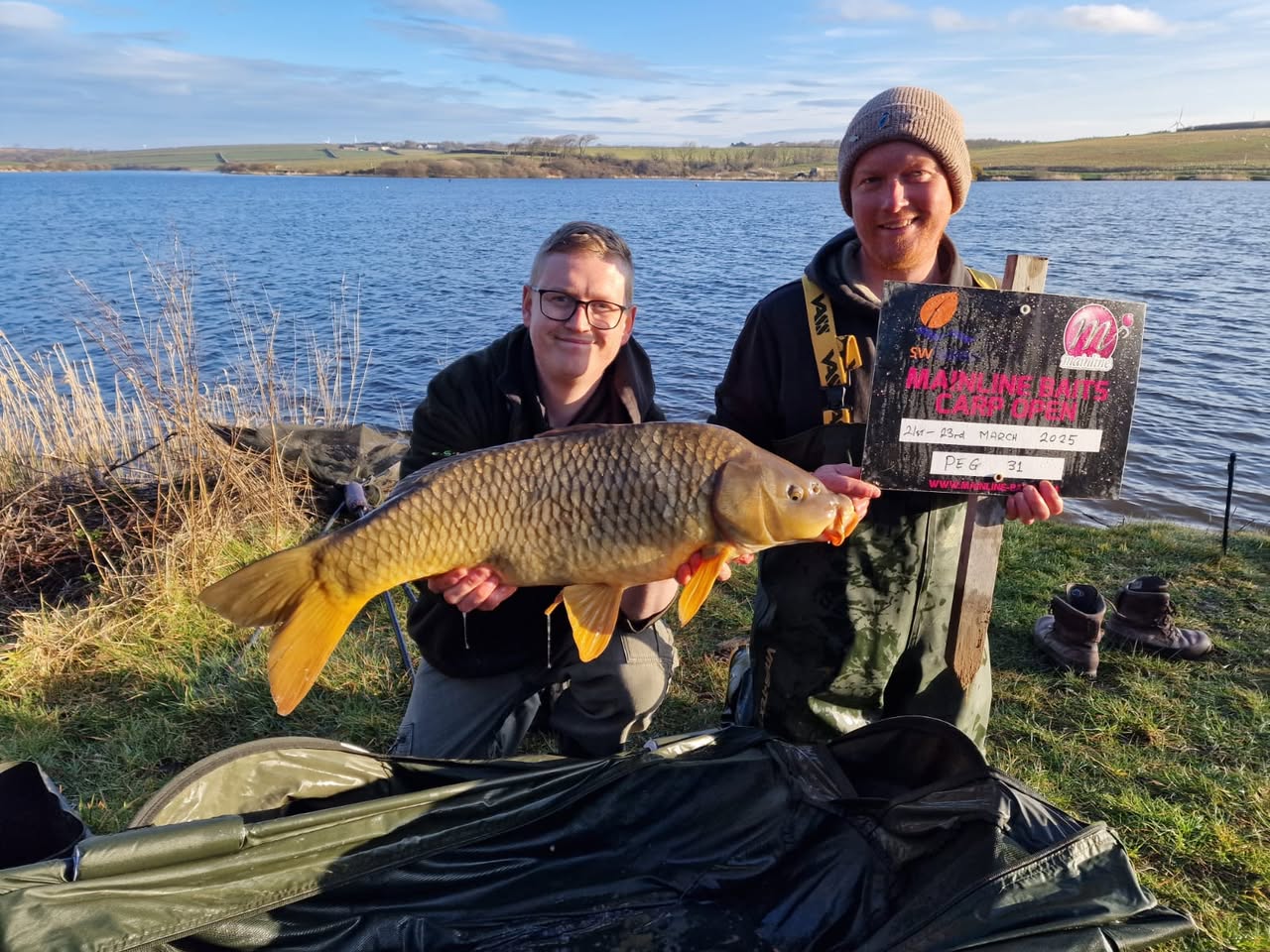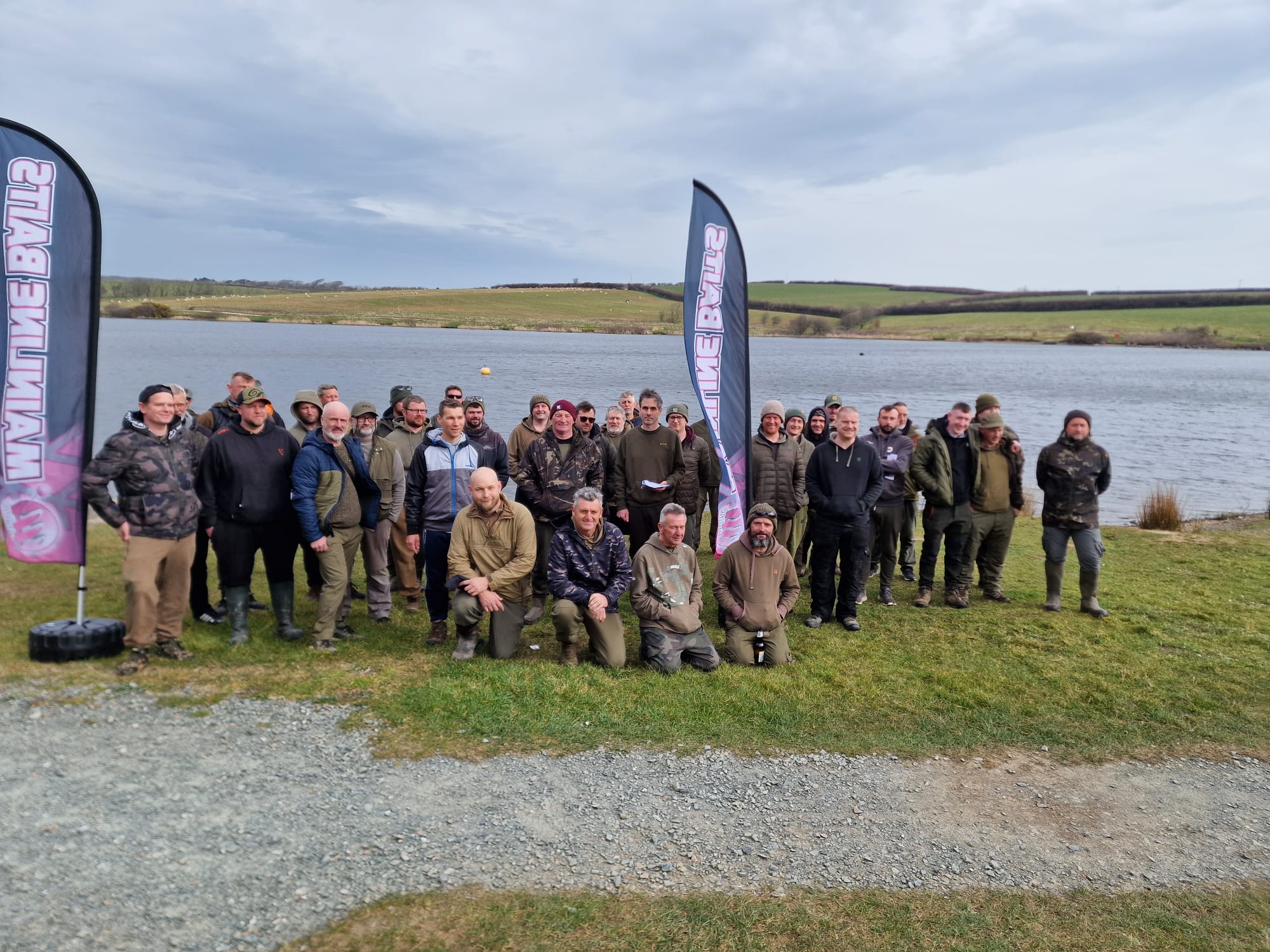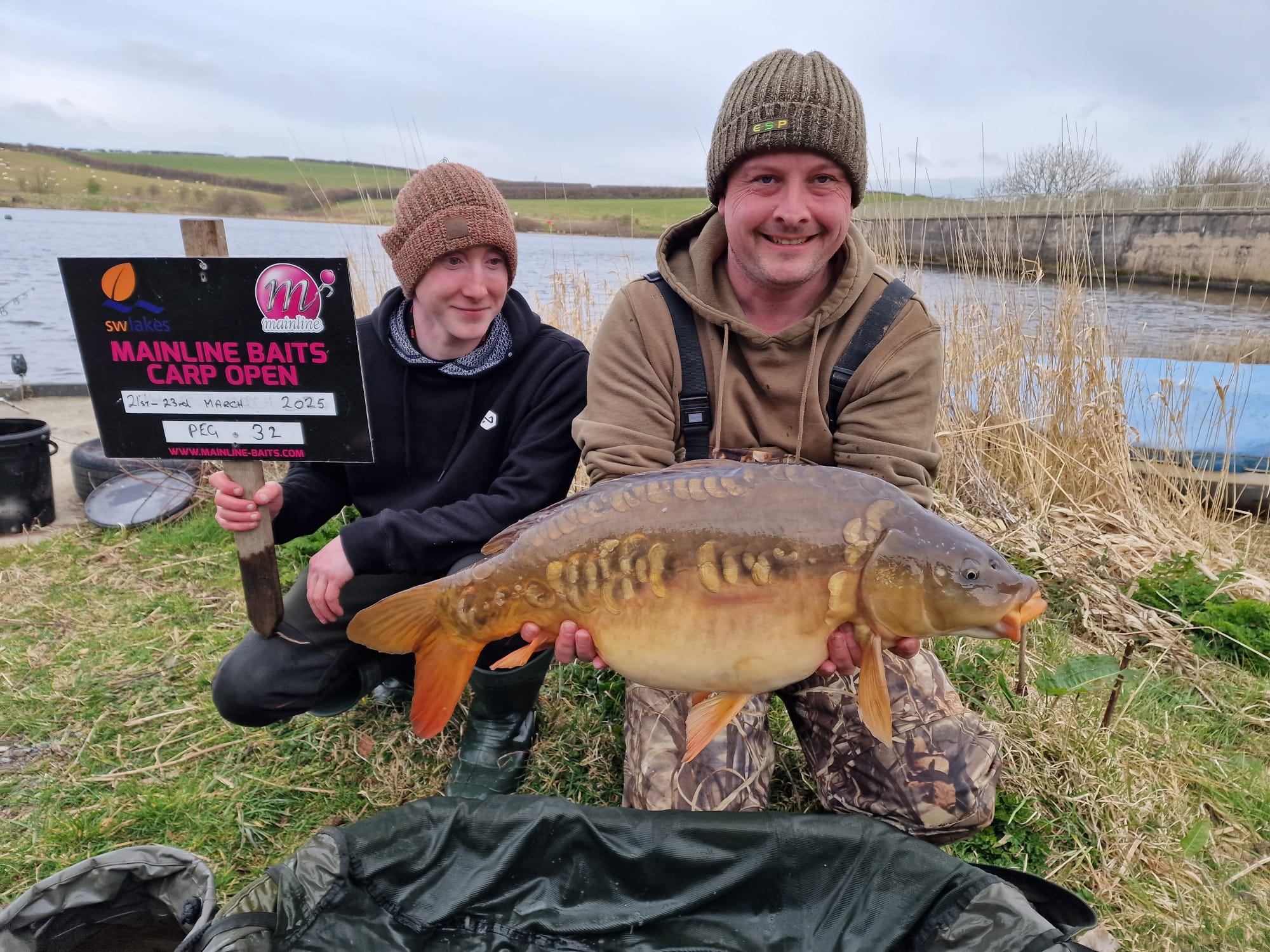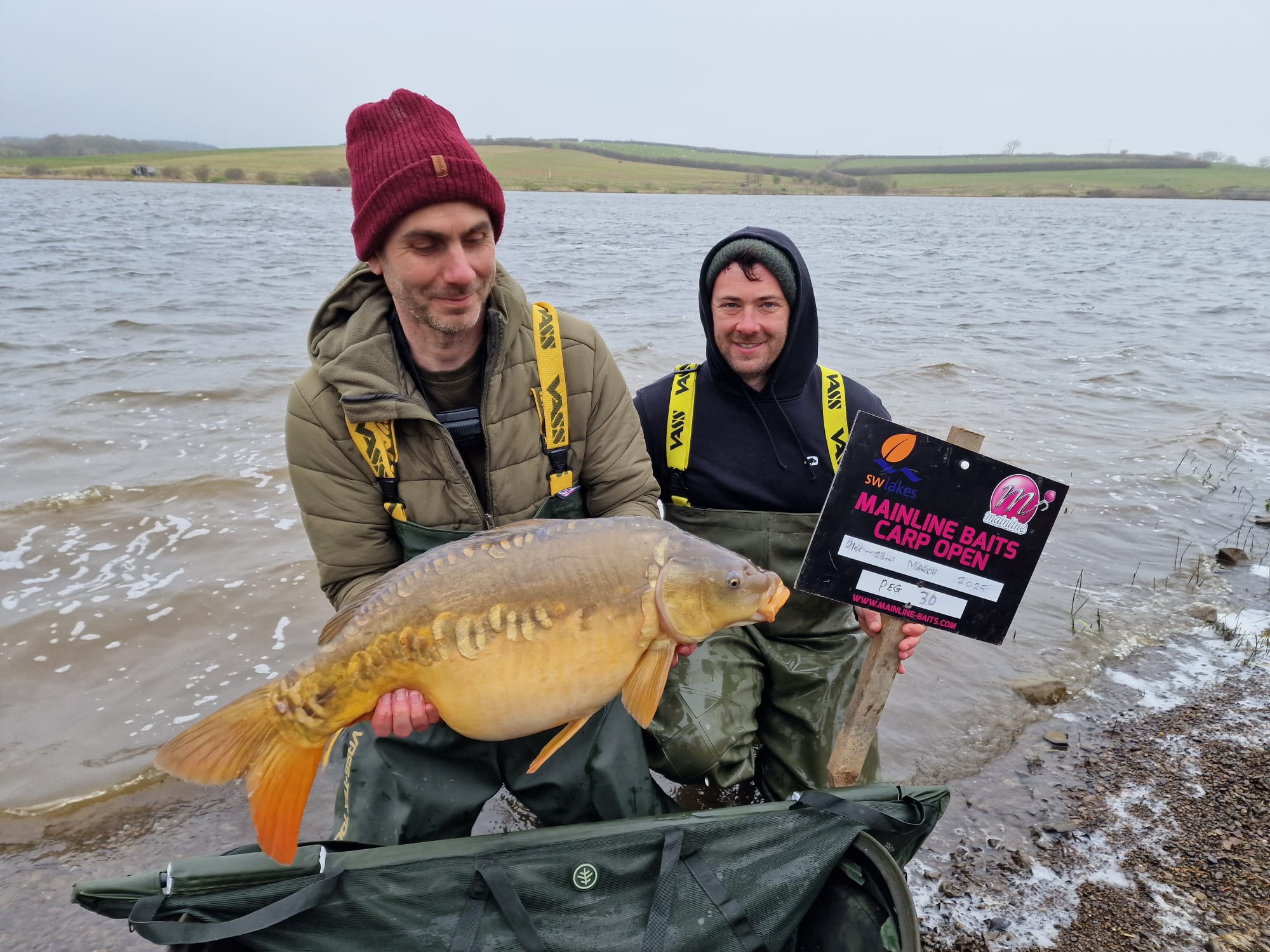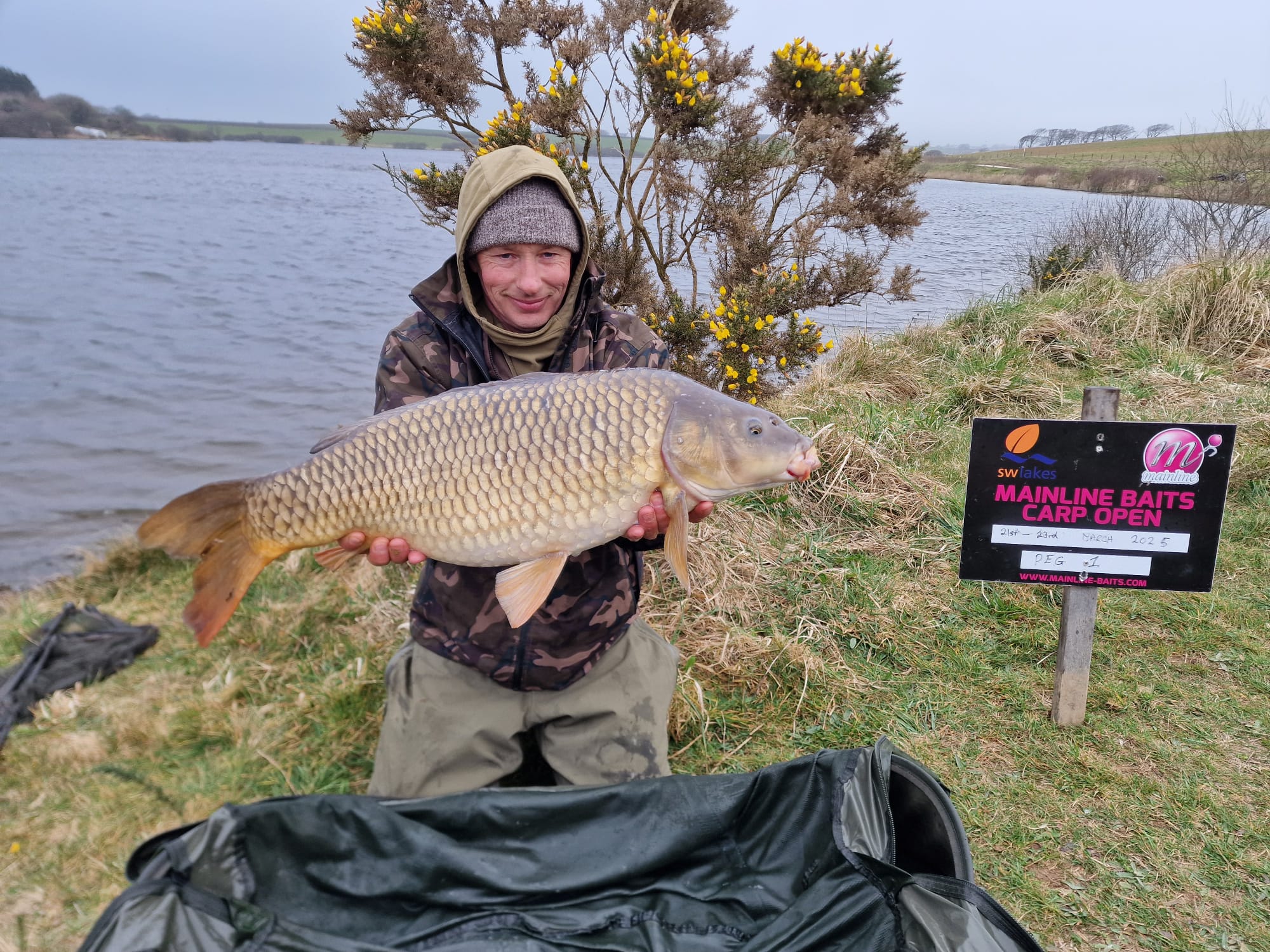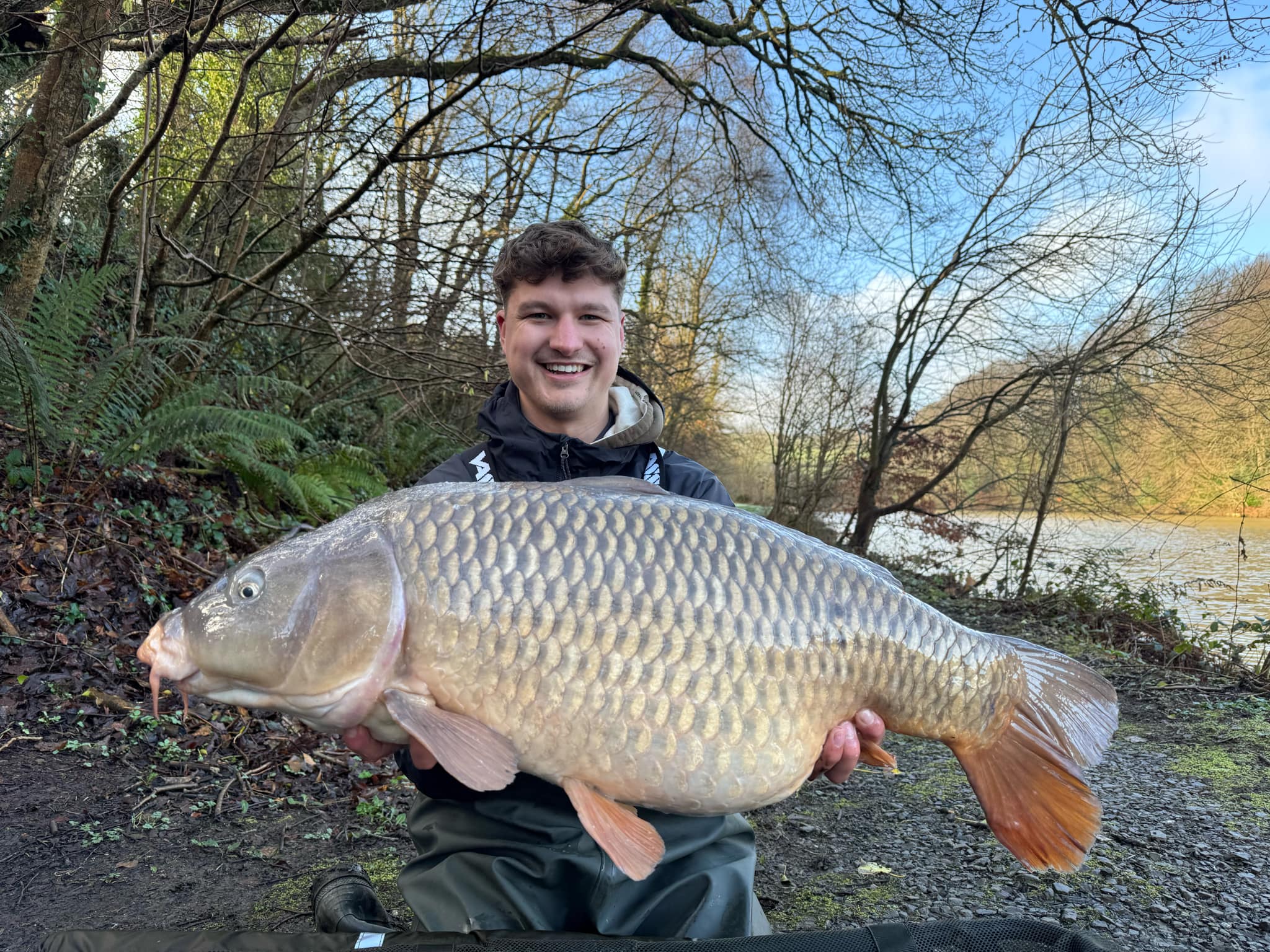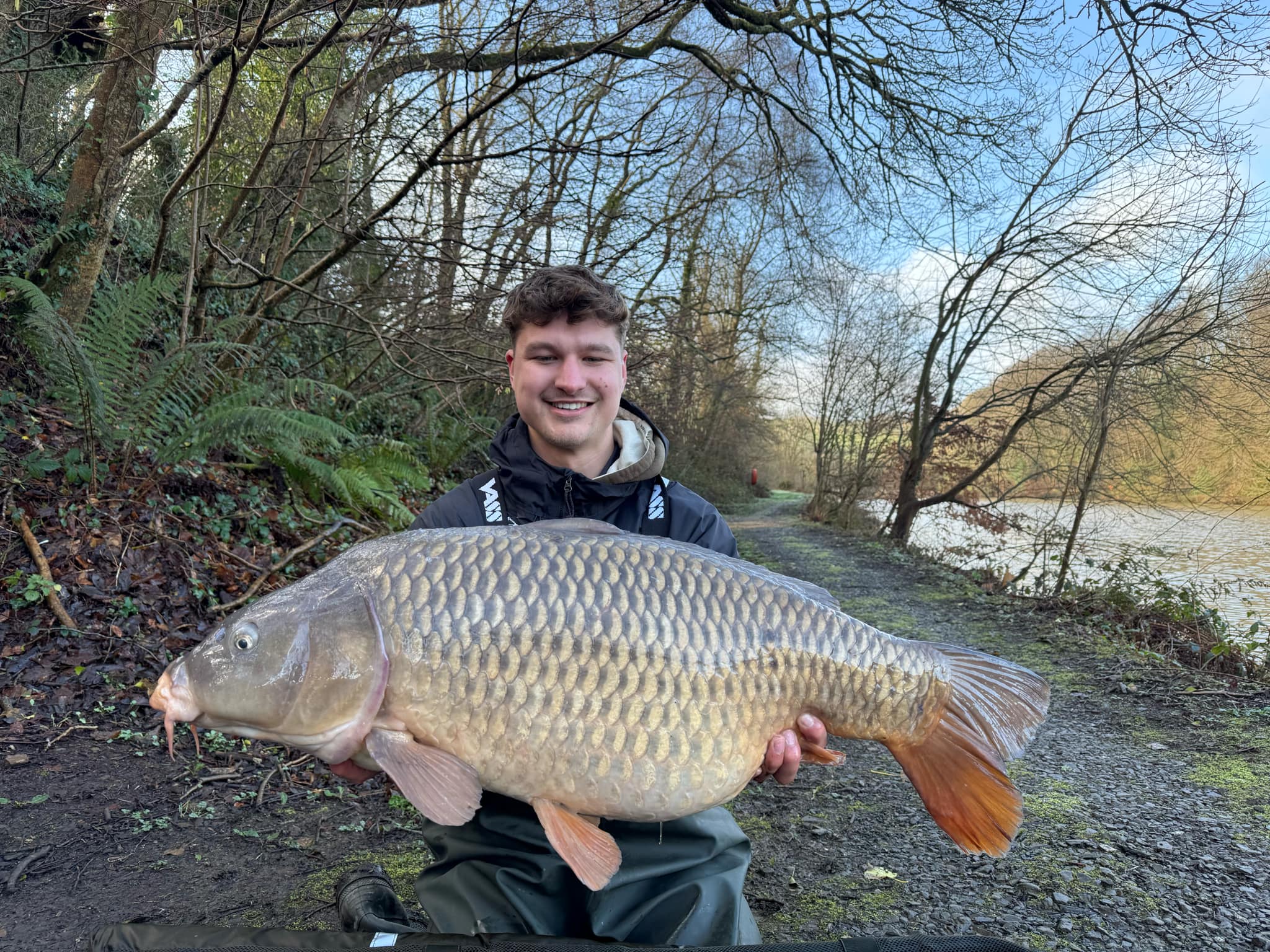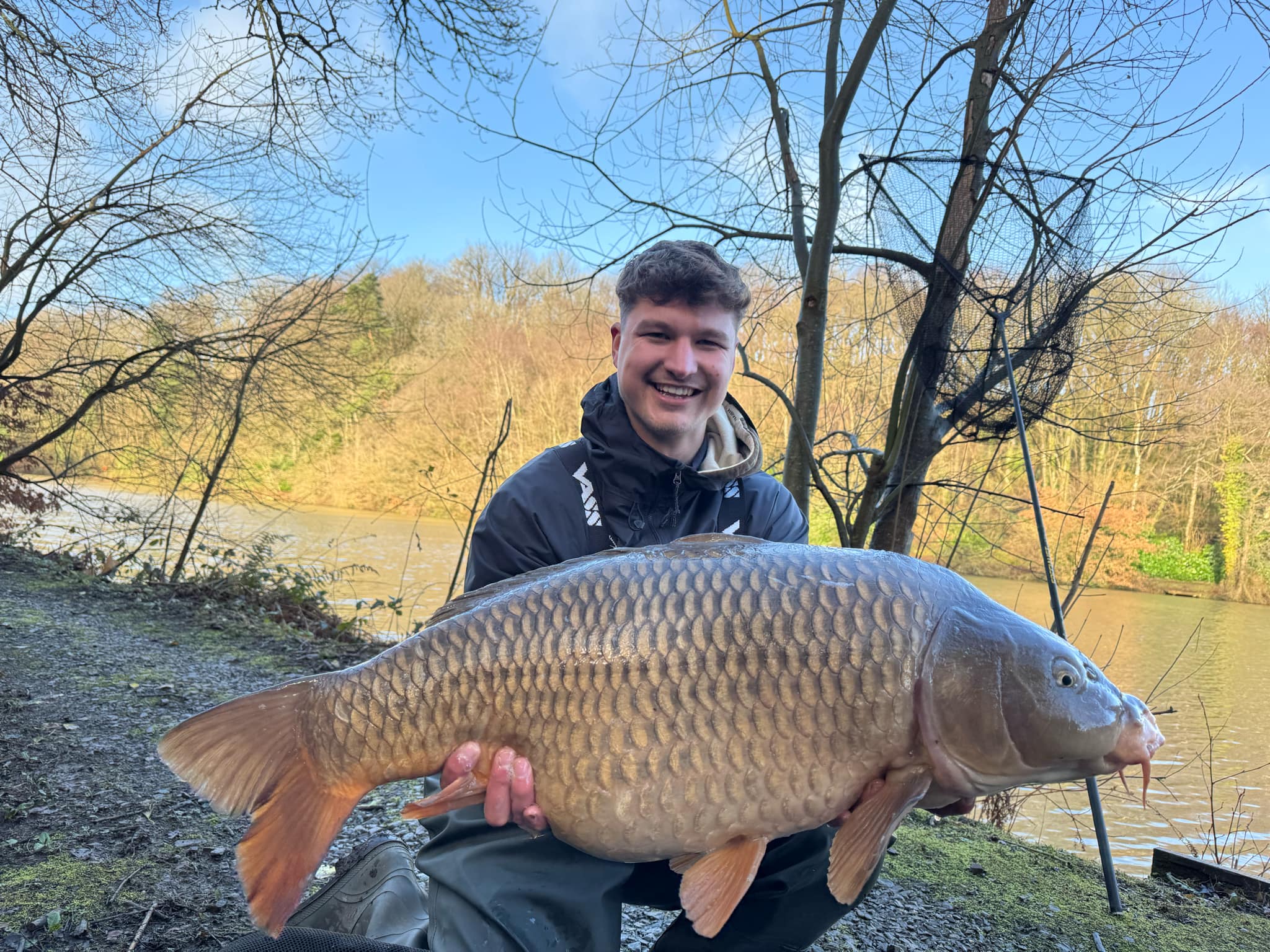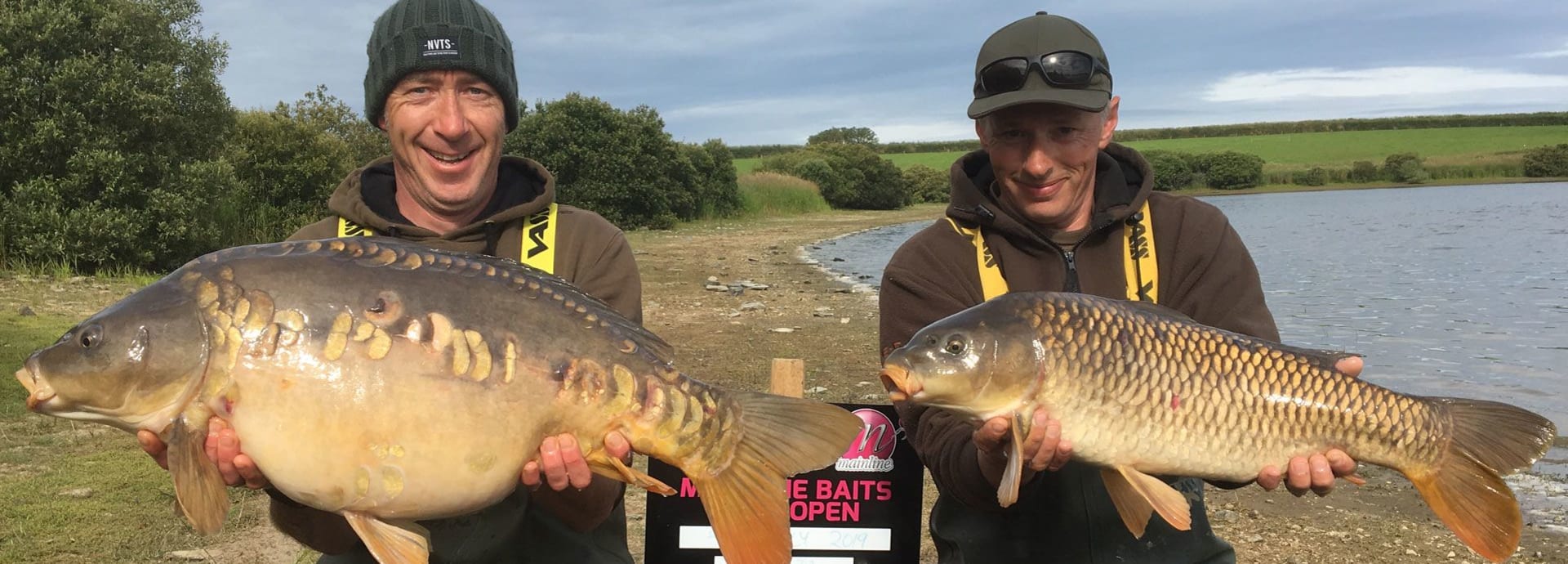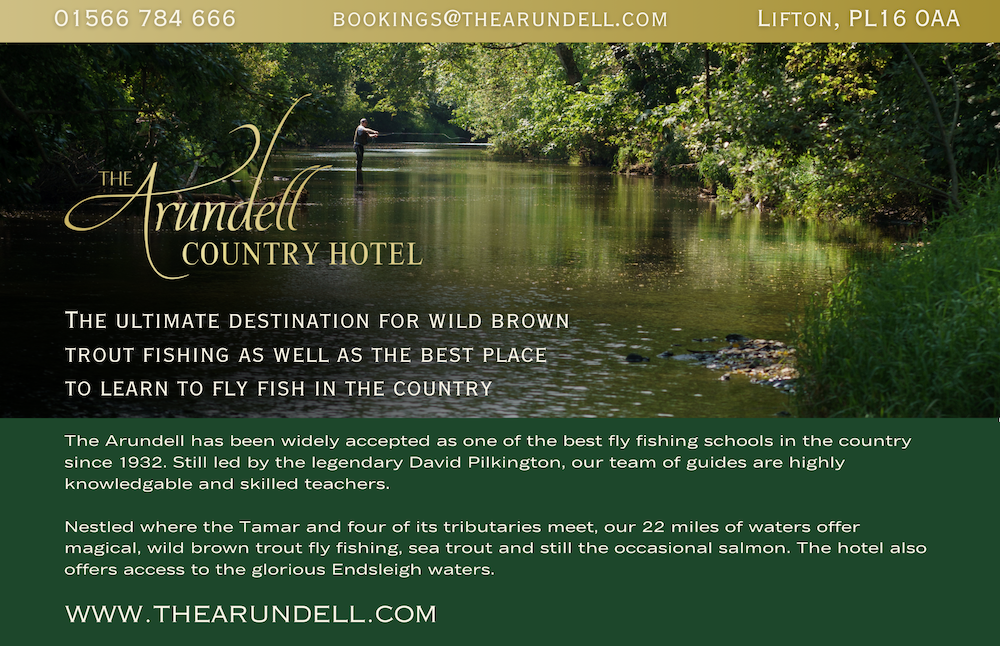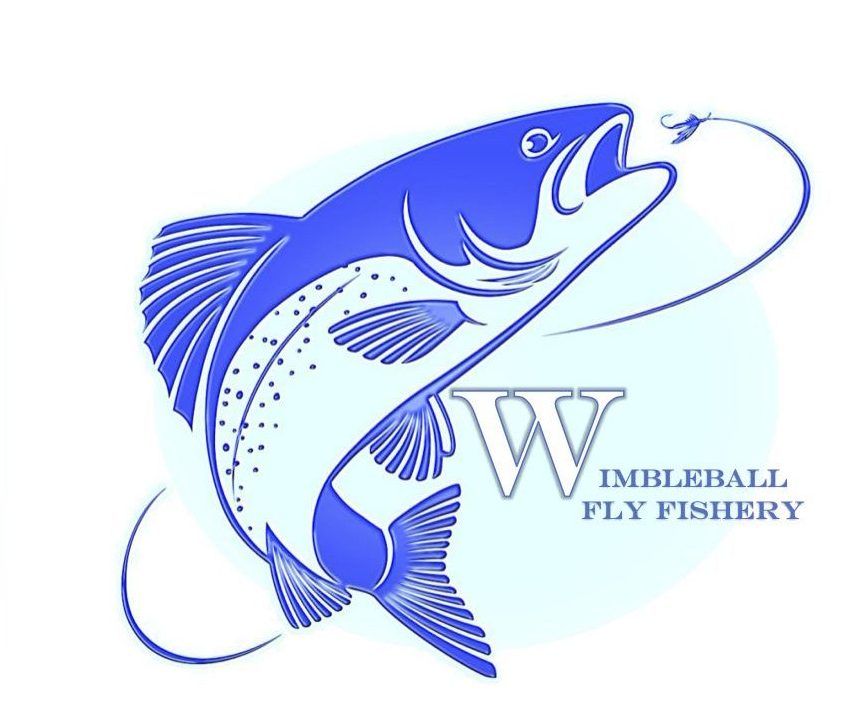South West Lakes Trust Trout Fisheries Report

Rainbow Trout Waters Opening Weekend – March 2025
The new season is now firmly under way at the South West Lakes Trust Rainbow trout fisheries, opening on 1 March (with prior preview days for season ticket holders). Brown Trout fisheries are due to open on 15 March. Where available, boats are now on the water, and should be pre-booked (online or via the telephone). The weather was perfect for the start of the season, with blue skies, a gentle breeze and some warmth in the air. All of the lakes are now at full capacity.
Fishing:
Kennick – Rods averaged over 3.7 fish per angler during the opening sessions, with fish generally located off The Lawns, The Narrows, Clampitts Bay, East Wall and Bracken Point. The fish were well down in the water column, with sinking or sink-tip lines locating fish, with a slow figure-of-eight retrieve. A selection of lure patterns (Green Boobies, Goldhead Blobs, Cats Whiskers, Black Tadpoles) as well as some nymphs (Goldhead Montana, Damsel, Red Montana) and the occasional Buzzer all caught fish. Most fish averaged around 2lb, with Darren Penfold catching the best fish of the weekend, at 3lb.
Siblyback – The season opened on excellent form – anglers averaged 5.95 fish per rod, with fish mainly located along the North Bank, Two Meadows, West Bank and Stocky Bay. While some fish were caught on Montana and Damsel Nymphs, most were caught on a variety of lure patterns (Orange FAB, Kennick Killer, Snake, Black and Green Fritz, Orange Blob and Humungous) fished on Intermediate or Sink-tip lines (at between three and four metres depth) with a slow retrieve. Ethan Price caught the largest fish, at 3lb.
Burrator – Here the season opened with a flying start, with anglers averaging 4.6 fish per rod, mainly from Longstone, Pig’s Trough, Lowery Point, Back Bay and Bennetts. Intermediate or floating lines with a long leader (at about one metre depth) with a fast retrieve proved to be the most successful method, with fish taking Nomads, Blue Flash Damsels, Red Diawl Bachs, Cormorants and Orange Fritz lures. Most fish averaged around 2lb, with Ian Foxley catching the best fish, at 56cm, or 3lb 14oz.
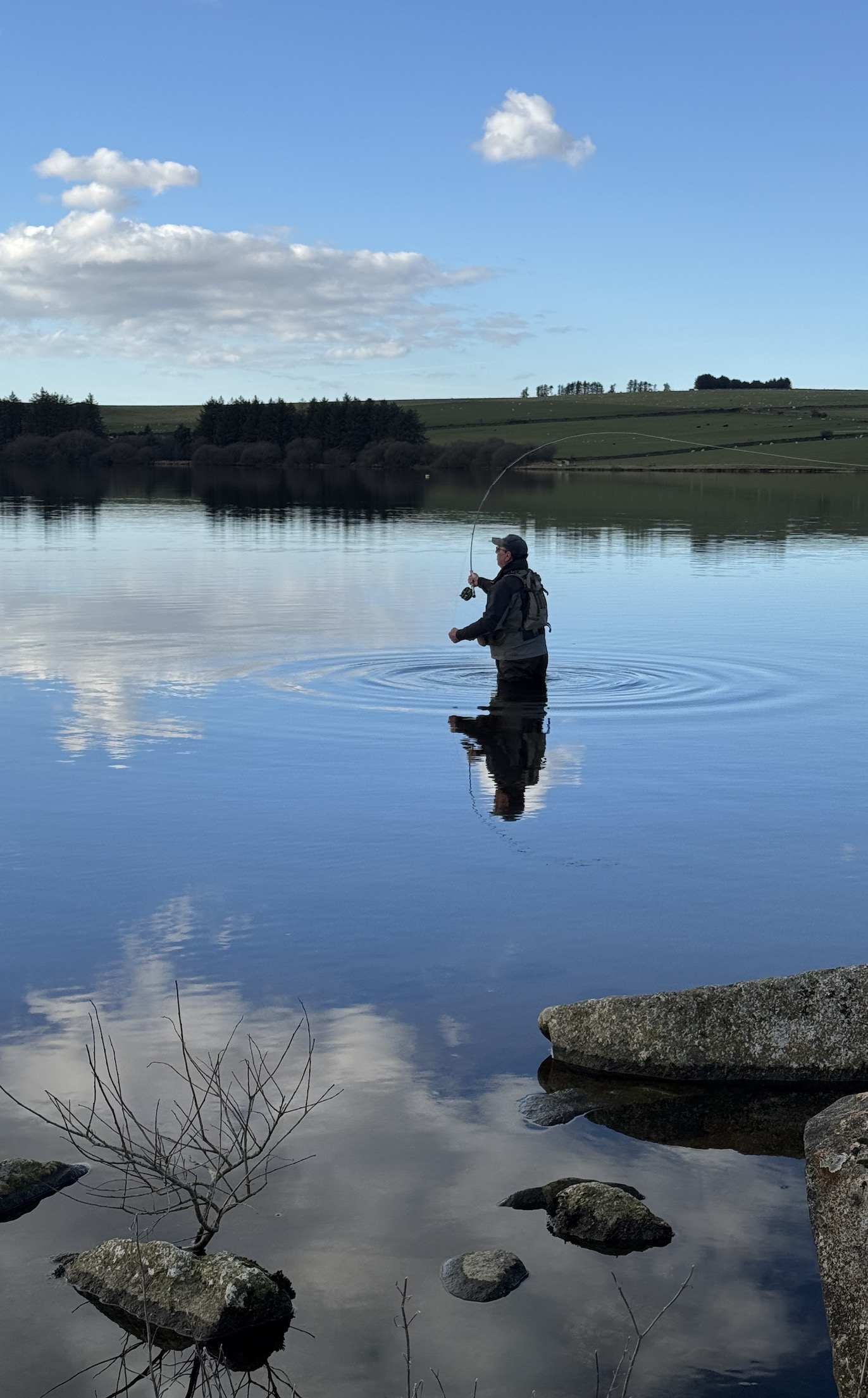
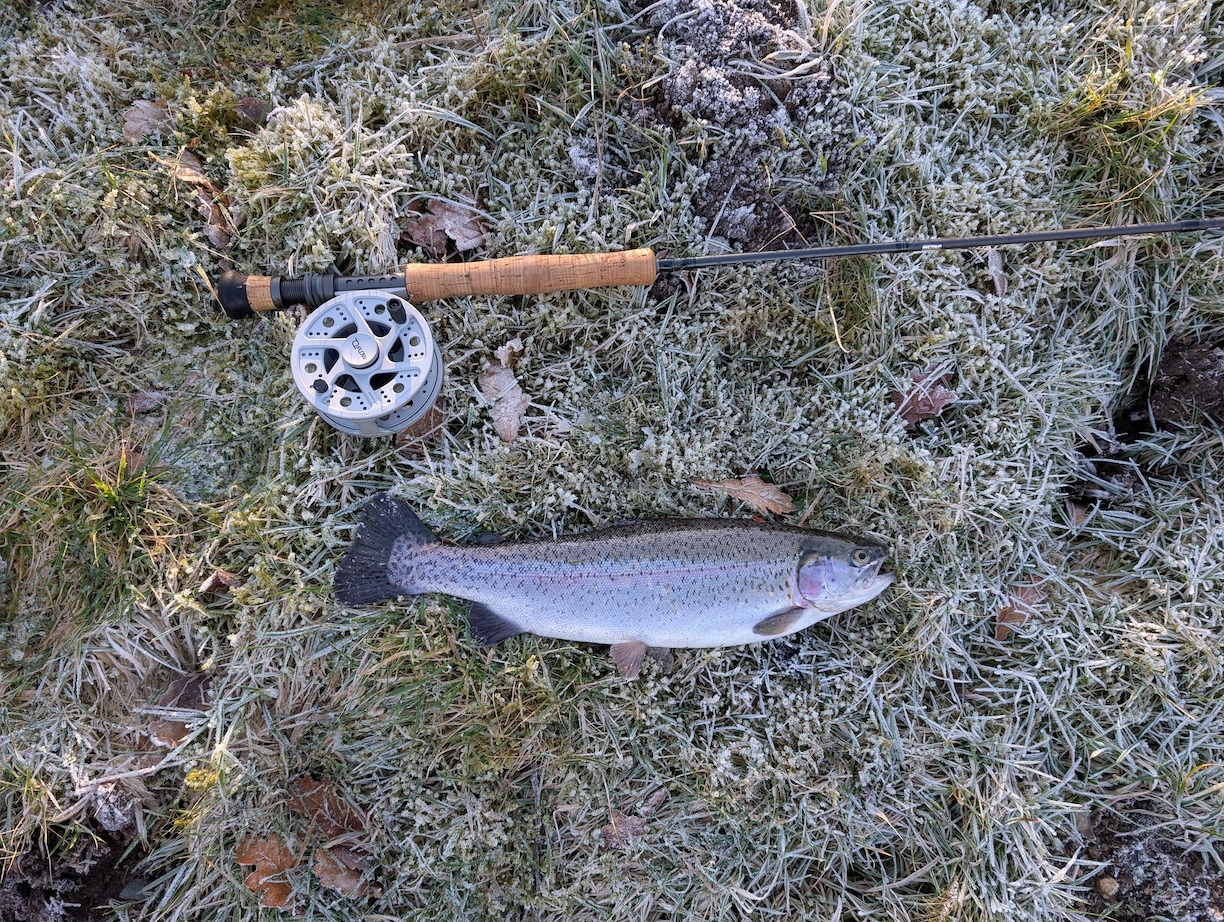

Stithians – Here the fishing was slower, with anglers averaging 1.1 fish per rod over the opening weekend. Fish were well spread out around the fishery, notably at Yellowort, Goonlaze, Ray’s Beach, Hollis and the deeper water by the dam. Most feeding fish were around two metres down, and were mainly caught on Intermediate or Sink-tip lines, with a slow retrieve. Successful flies included Black and Peacock Spiders, Hares Ears, Montanas and Damsel nymphs, as well as Orange Blobs, Cormorants and Tequila FABs. Simon Peters managed a couple of fish at 1lb 8oz casting into the wind off Deep Bank.
Another successful Fly Fair was held at Roadford Lake on 23 February, with fly-tying demonstrations, casting lessons, and trout cookery demonstrations. Charles Jardine opened the event, which also included a variety of tackle and fly-tying suppliers, as well as the chance to meet local clubs and talk fishing with old friends, and some bargains to be had on the Kennick Club used-tackle stand.
Please see the Trust’s website (www.swlakestrust.org.uk/trout-fishing) for more information on buying tickets, boat availability and booking, and forthcoming events.
Chris Hall (March 2025)
Winter carp brace from Jennets
Mainline Baits Carp Open Pairs Competitions 2025
The Mainline Baits Carp Pairs competitions are held at our 81 acre fishery, Upper Tamar Lake. The competitions are generously sponsored by carp fishing giants Mainline Baits.
There is £3,750 in prize money from South West Lakes Trust for each competition. Each person who enters will get a goody bag with some fantastic Mainline products inside. As well as four section prizes there will be a prize for the biggest fish.
First prize: £2,000
Second prize: £1,000
Third prize: £500
Fourth prize: £250
Fifth prize: 24hr or day permits
This a fun, exciting and inclusive competition. The three biggest fish caught by each pair will be added together to decide your final weight and determine your place on the leaderboard. This year we have added more prizes and limited the numbers to 28 pairs, so book now to avoid disappointment.
All tackle and equipment is transported to and from your swim and the price includes a post competition barbecue/ hot food on the Sunday.
2025 dates:
- Friday 21 March to Sunday 23 March
- Friday 25 July to Sunday 27 July
- Friday 10 October to Sunday 12 October
The competition is limited to 28 pairs. You can book your place online below.
For further information contact us on 01566 771930 or [email protected]
SOUTH WEST FLY FAIR 2025
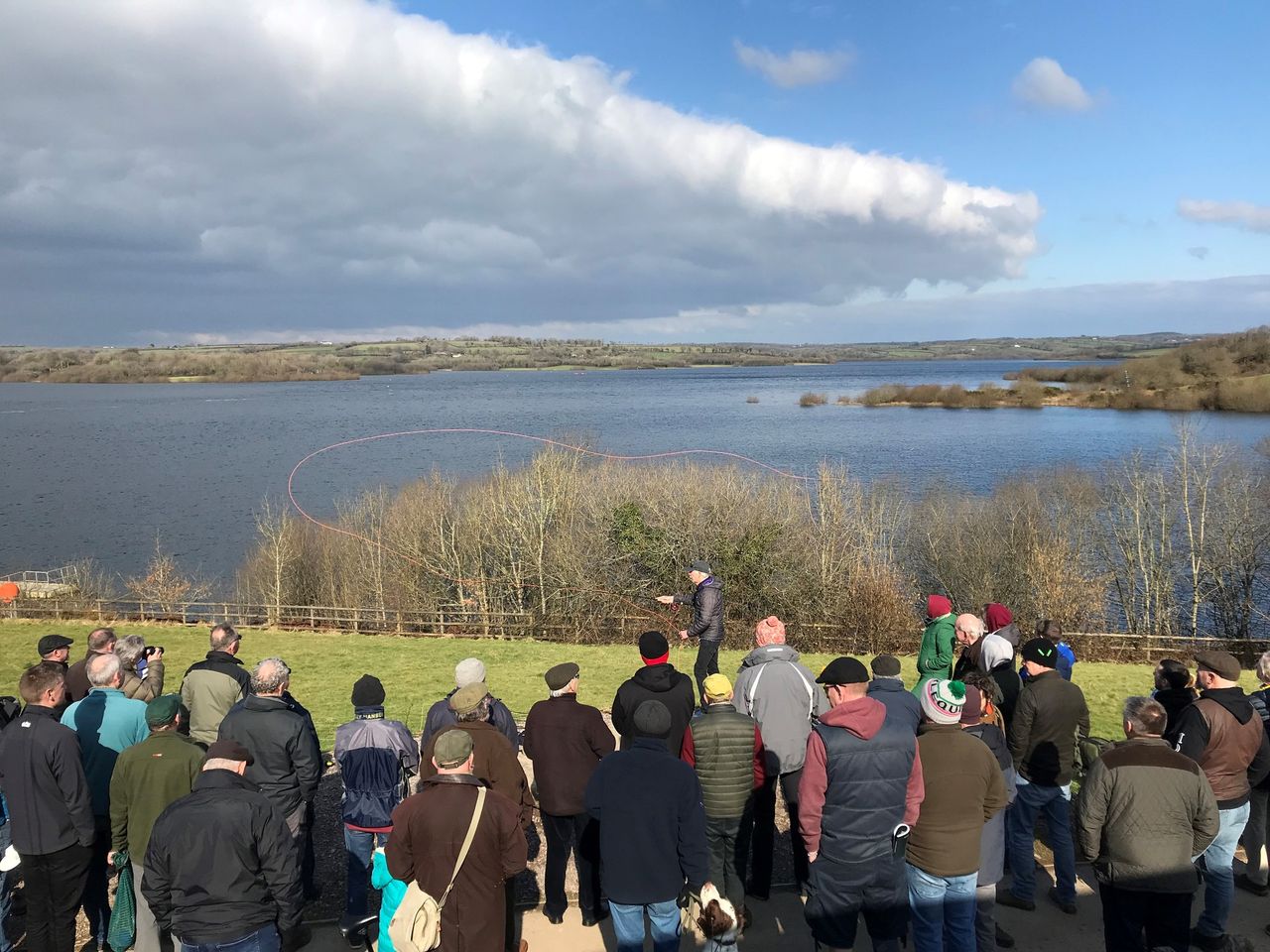
South West Fly Fair 2025 will be held at Roadford Lake on Sunday 23 February 
A fun and informative family day out with activities such as fly tying and casting demonstrations, trade stands, expert advice from trout, sea and coarse fly fishers and food and drink available from Roadford Lake Café (don’t forget season permit holders get a 10% discount in the café too)!
Exclusive 10% discount on next year’s trout season permits, available to Fly Fair attendees only

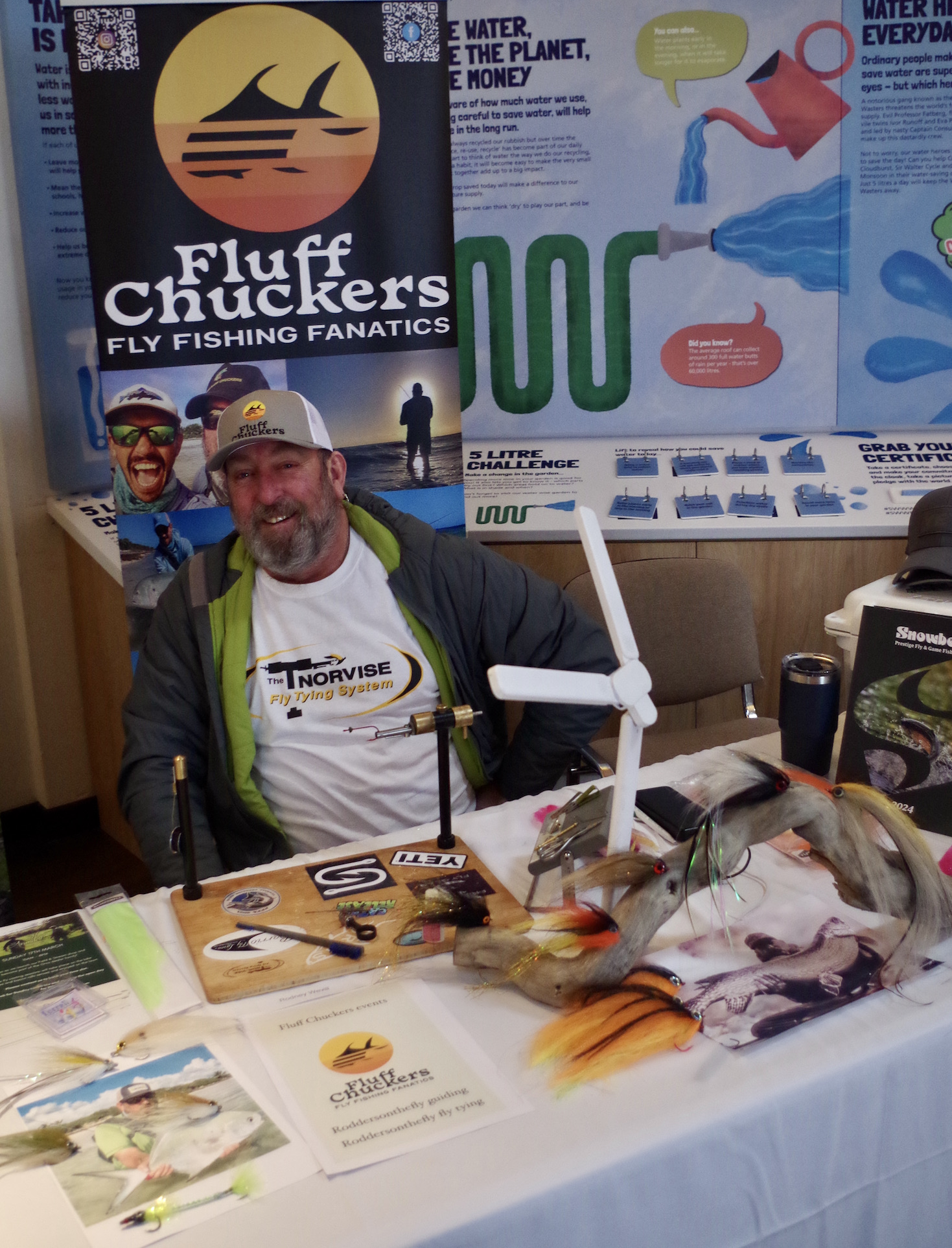
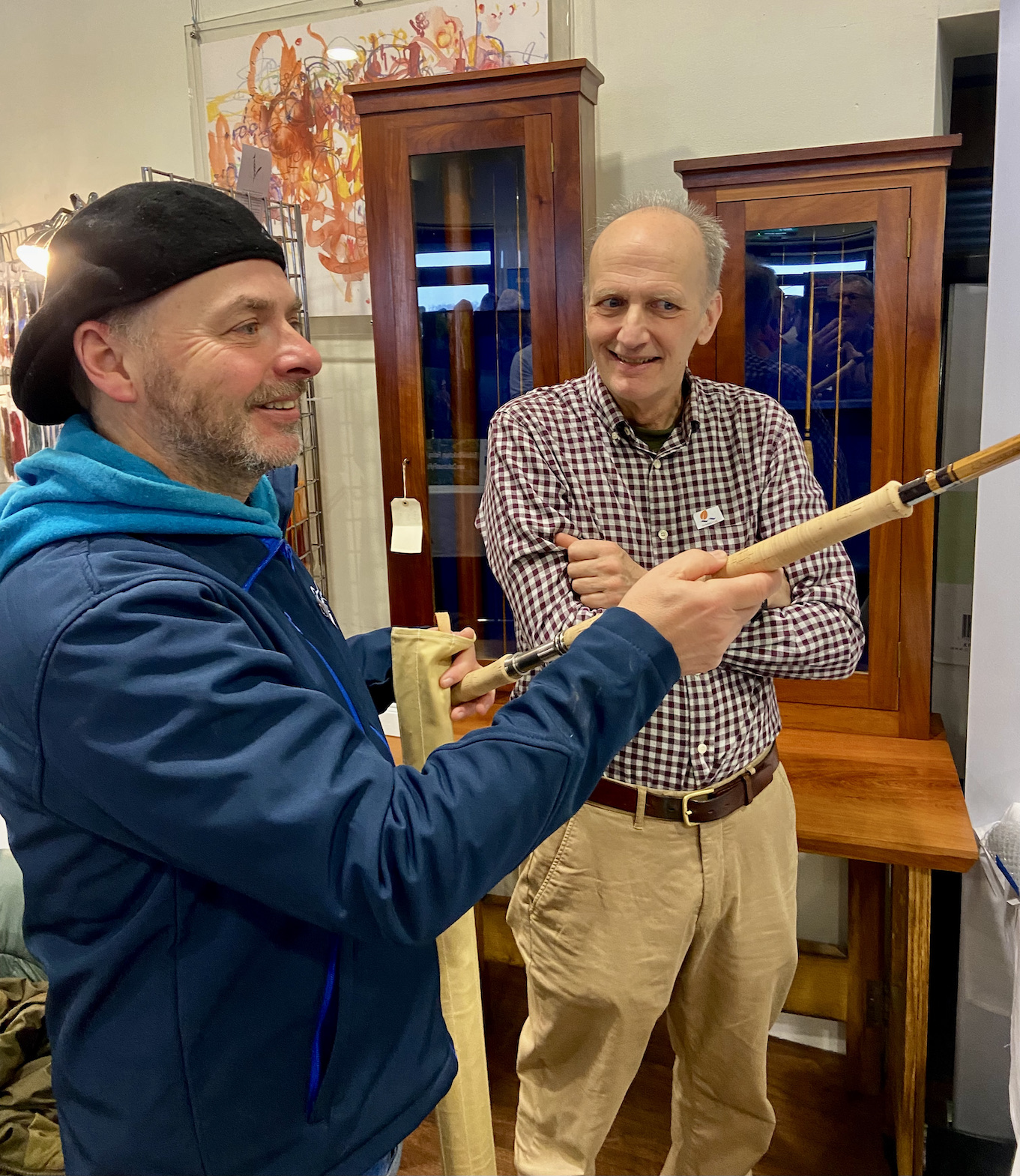
South West Lakes Trust Trout Fisheries Report
South West Lakes Trust Trout Fisheries Report
July 2024
The weather has been warm and humid, and, in spite of some rain, the water levels have now started to drop; water temperatures have remained cool enough generally for fish to keep active. There has been plenty of insect activity and the fish have continued to feed keenly, both on the surface and below.
Fishing:
Kennick – Rods averaged around 1.5 fish per angler, with fish well spread out around the fishery; bank anglers enjoyed slightly more success than the boats, with Clampitts Bay, The Narrows and Poplar Bay fishing particularly well. Floating lines with a long leader with a variety of retrieval methods proved the most successful, with Claret Hoppers, Sedge patterns and Beetles catching surface feeding fish, and either nymph patterns (Damsel, Hares Ear, Diawl Bach and Buzzers) or lures (Viva, Cats Whisker, Tadpoles and Muddlers) catching the deeper feeders.


Siblyback – Here anglers are enjoying some quality sport, averaging 4.3 fish per visit. Stocky Bay, Two Meadows, Crylla and the West Bank are producing the most consistent fishing and best results, using either floating or intermediate lines. Fish have generally tended to be just under the surface, rising to feed on beetles and hatching midges (when CDC buzzers, Hawthorns, Bobs Bits, Hoppers and Beetle imitations have worked particularly well). Deeper feeding fish have taken Damsels, Buzzers, Diawl Bachs or lures (such as Orange Blobs, Vivas, and Tadpoles), all with a slow retrieve. Al Lawson (from Plymouth) caught five rainbows to 2lb, with fish hitting both the buzzers, fished washing-line style, or taking the Claret Hopper on the point.

Burrator – The fishing here has become more challenging as the month progressed, with a few fish rising (when Claret Hoppers have worked well), but most fish have stayed to feed in the deeper water. Floating, Sink-tip, Intermediate and sinking lines have all caught fish, with a slow retrieve producing the best results. Sub-surface feeding fish have taken Montanas, Damsels, Buzzers and Hares Ear patterns, with Back Bay, Longstone, Bennett’s Lawn and Pig Trough all holding fish.
Stithians – Continued to fish well, with plenty of fish looking to the surface and eager to feed. Floating lines with a very slow retrieve produced some excellent sport, with a variety of dry patterns (Beetles, Daddies, Adams, Sedge patterns, Hoppers, Bobs Bits and Hawthorns) all catching well; otherwise, Diawl Bachs, Buzzers and Black and Peacock Spiders fished just below the surface caught the deeper feeders. Popular locations included Yellowort, Golden Lion Point, North Bank, Pub Bay, Goonlaze and Pipe Bay. Simon Peters (from Cusgarne) managed to catch eight rainbows, one blue and one brown trout in one session – starting early in the morning (5.30am), and fishing along Sailing Club Bank using Dry Foam Beetles, to finish by 8am.

Fernworthy – The sport picked up at Fernworthy as the month progressed, when anglers averaged just under three fish per visit. Generally fish were well spread out around the lake, although Thornworthy, Brownhills and Permit Hut Bank produced the most consistent fishing. Sporadic hatches of small black buzzers brought fish to feed on the surface, when they could be caught using Black Gnats and Hoppers; otherwise shallow-fished Pheasant Tail Nymphs, Black and Peacock Spiders, Invictas, Bloody Butchers and Damsel nymphs all produced some great sport.
Colliford – The excellent sport continued at Colliford, with anglers averaging just over five fish per visit; most of the banks held fish, with Lords Waste, Spillway, Pines and the Dam Car Park Bank producing particularly consistent sport. With plenty of insect hatches (midge and sedge) as well as beetles blown onto the water, the Colliford browns proved eager surface feeders, either taking dry patterns (Bibio Hoppers, Beetles, Hawthorns and Sedges), or nymphs and wets fished in the top two feet of water (Diawl Bachs, Black and Peacock Spiders and Orange Pheasant Tail nymphs in particular). Generally floating lines and long leader and a slow retrieve proved to be the best method. Mark Lambert (from Hitchin) caught twenty fish, all on dries, keeping on the move to cover as much bank as possible.
Roadford – Anglers averaged 3.7 fish, with the banks at Anglers Car Park and Wortha proving to be the best locations. Few rising fish meant that sub-surface patterns fished on floating lines produced the best results. Popular patterns included Cormorants, Iron Dun, Damsels and Bibios. Duncan Kier (from Belstone) caught eight browns to 1lb 8oz in a session, while Alan Judd (from Seaton) caught eight browns to 1lb fishing from a boat, using a variety of sunk patterns on a floating line.
Please see the Trust’s website (www.swlakestrust.org.uk/trout-fishing) for more information on buying tickets, boat availability and booking, and forthcoming events. The Trust will be offering beginners’ taster days at Roadford, Burrator, Stithians, and Kennick throughout the season, assisted by local experienced guides and instructors. The Trust, in conjunction with Fluff Chuckers, will be running a Brown Trout Masters competition this season, to be held over three dates at Colliford, Fernworthy, and Roadford – please see the website for more information.
Chris Hall (July 2024)
Wistlandpound

Wistlandpound in North Devon often gets overlooked which is a great shame as it is a delightful fishery with some hidden gems. Derek Spears sent me this image of a superb wild brown trout he tempted during a short evening session.(Estimated at 2lb 8oz to 3lb ) I met Derek whilst enjoying a short session there myself.
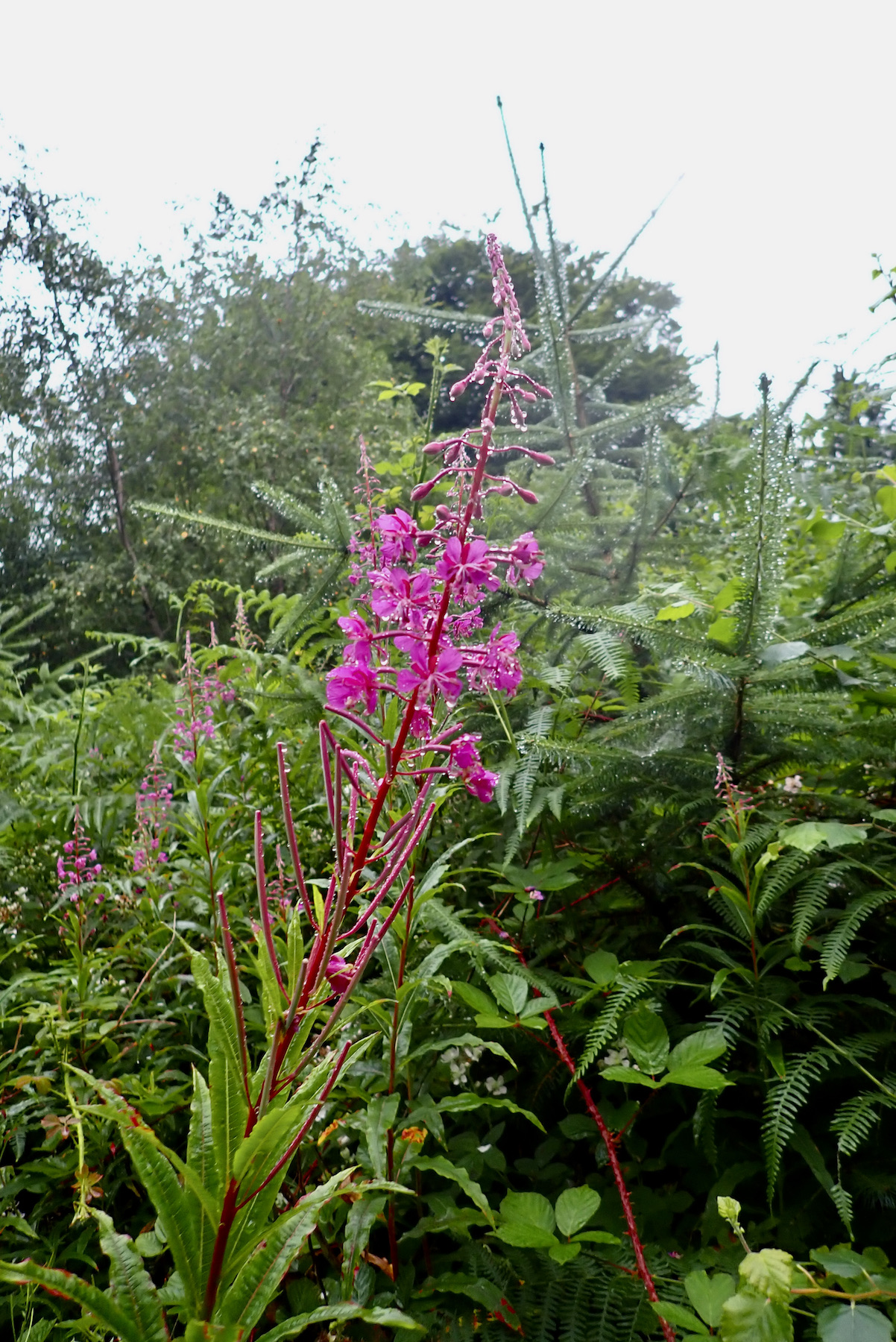

It was a murky overcast evening with occasional drizzle. The loosestrife was glistening with water droplets as I navigated the lush colourful perimeter path. Arriving at the water’s edge it was immediately apparent that there was plenty of fishable bank space now that the water level has dropped.

I set up with a black spider on the point and a black pennel on the dropper. Second cast I hooked a beautiful crimson spotted brown of perhaps 10″. On the next cast a very good brown trout converged on the fly but I failed to connect.

I searched the area further with no further result. Moving on I looked across the lake to see another angler doing battle with what was undoubtedly a good fish. (This was Derek with the trout pictured above).

The top inlet area of the lake produced another wild trout and half a dozen bronze flanked Rudd. As the light faded I changed to a small black Wooley bugger and was delighted to catch a couple of trout topped by a hard fighting brown of over 1lb. Another much larger fish swirled behind the lure fuelling my enthusiasm for a return visit. The large numbers of rudd fry now present ensures a good food supply for the larger wild browns that lurk within the water. I feel sure that some lucky angler will hook into a surprisingly large trout before the season ends.


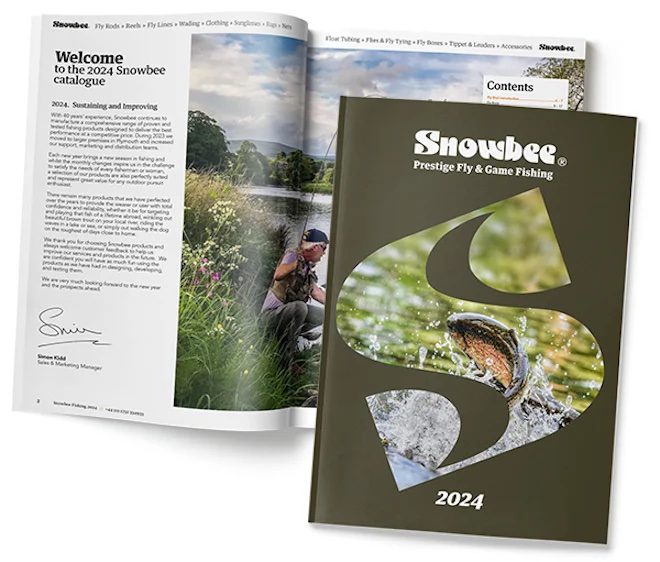
The Mainline Baits Open Carp Match at Upper Tamar
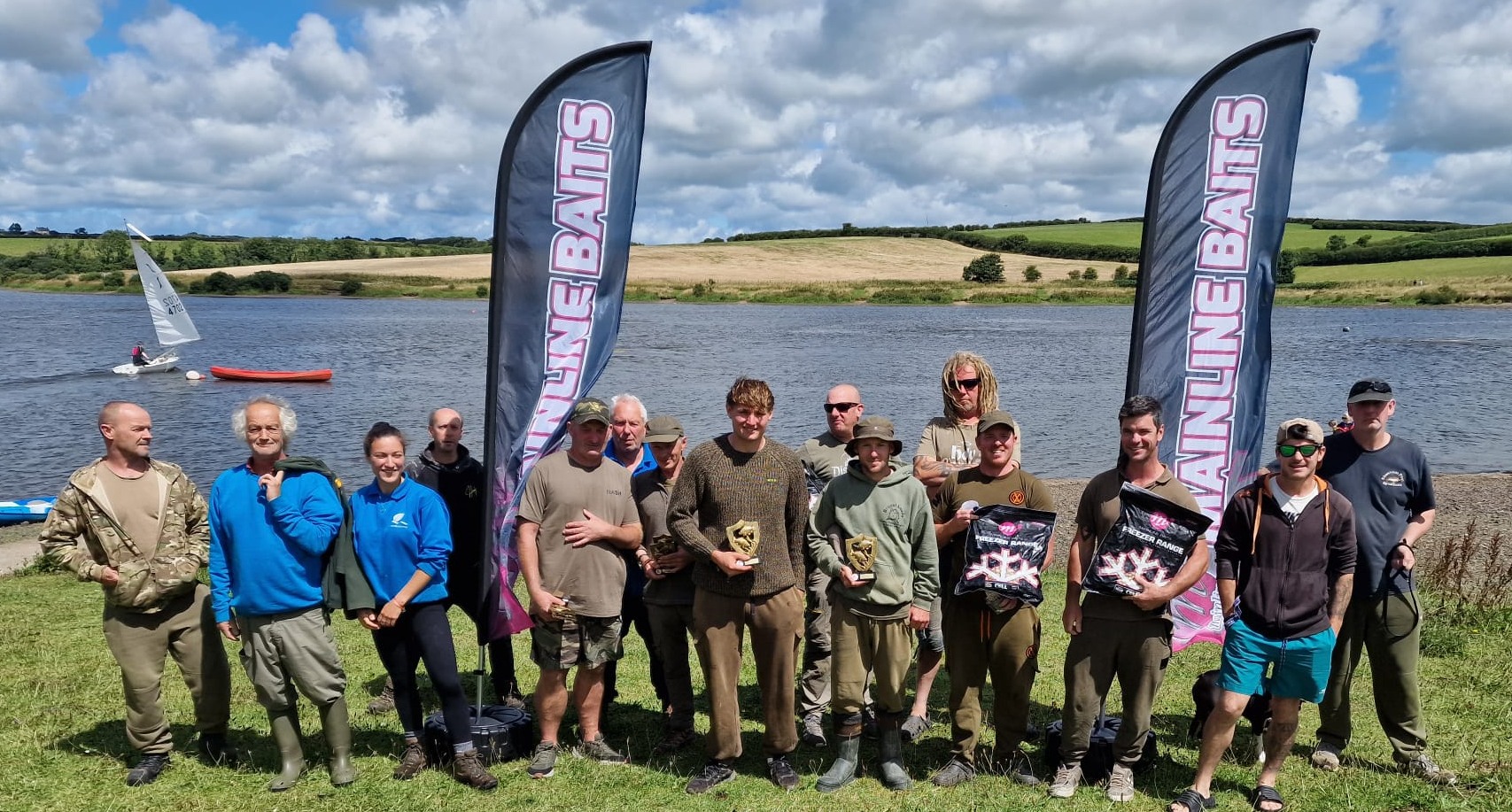
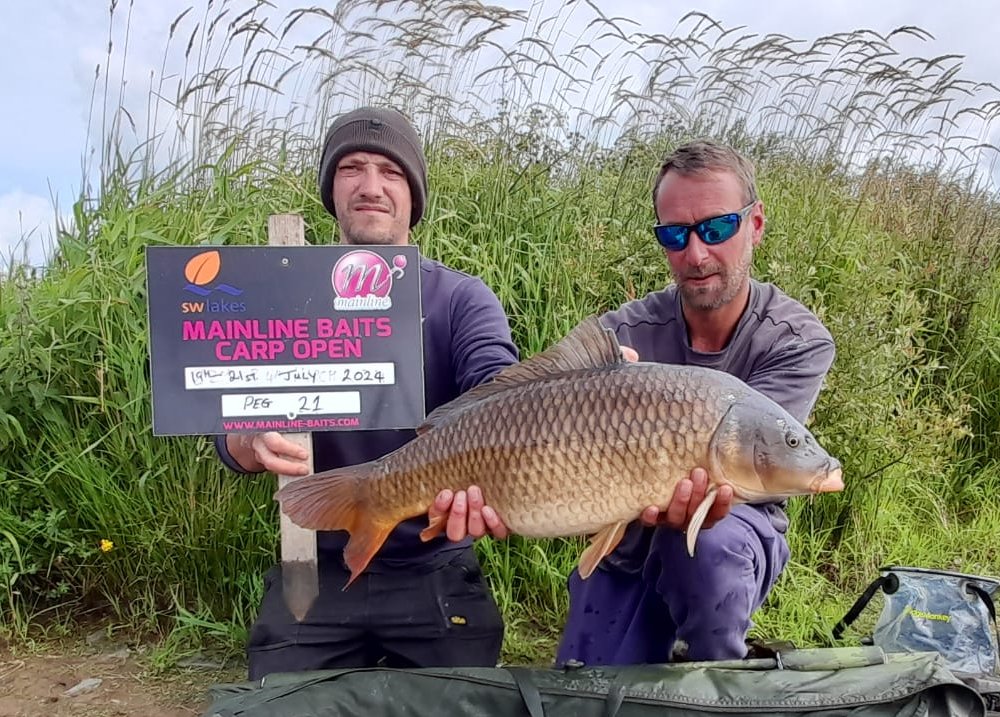
Lower Tamar carp and bream
Aaron Bunning had a trip to remember on Lower Tamar this week. After setting up in Swampy’s and catching one fish, he decided to move swims in the morning to Hilton’s. Putting a good spread of Mirage baits ‘Reservoir Specials’ he fished a matching wafter as a hook bait. He ended the session with four fish including this cracking 33lb 6oz common.

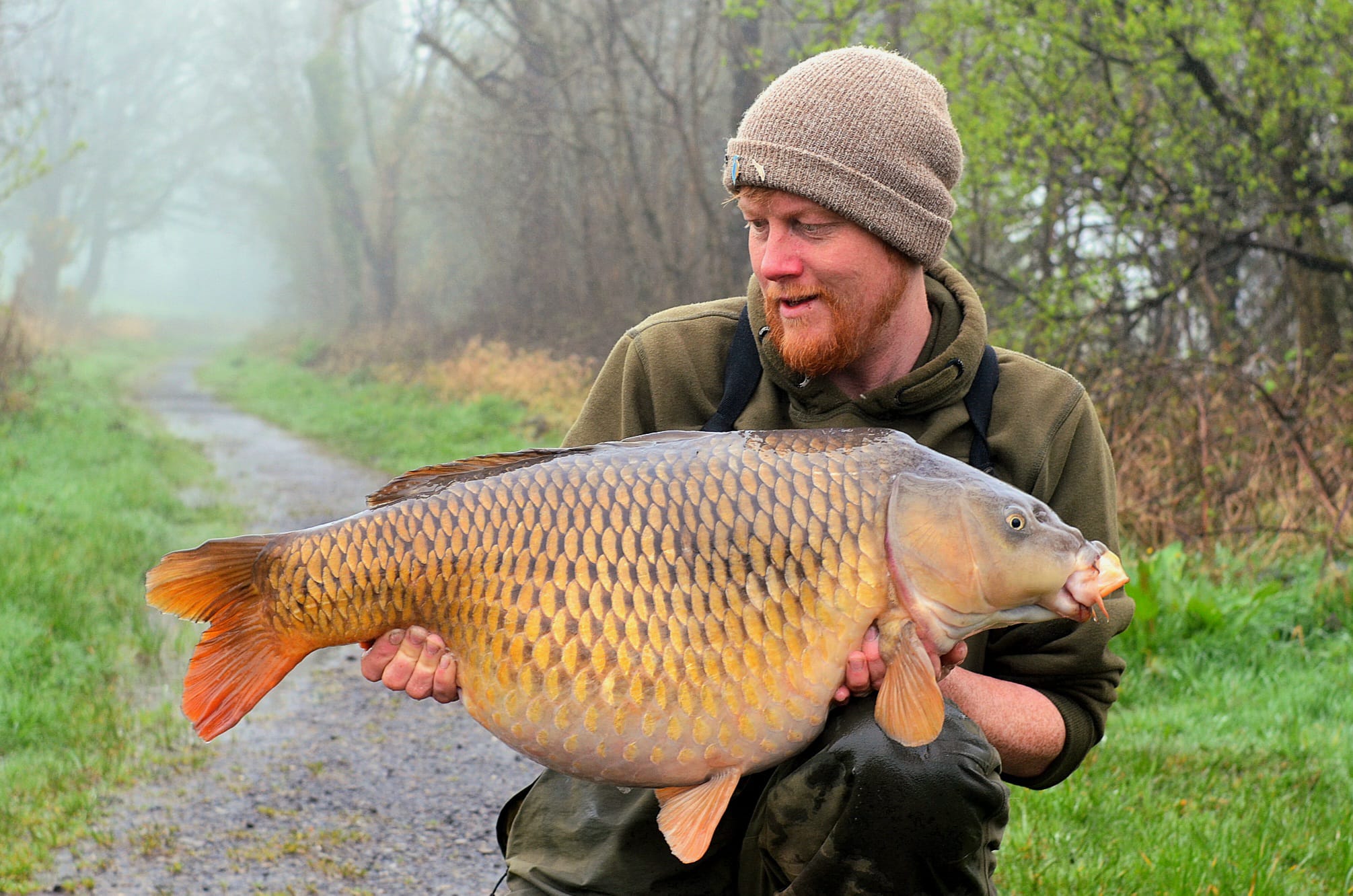

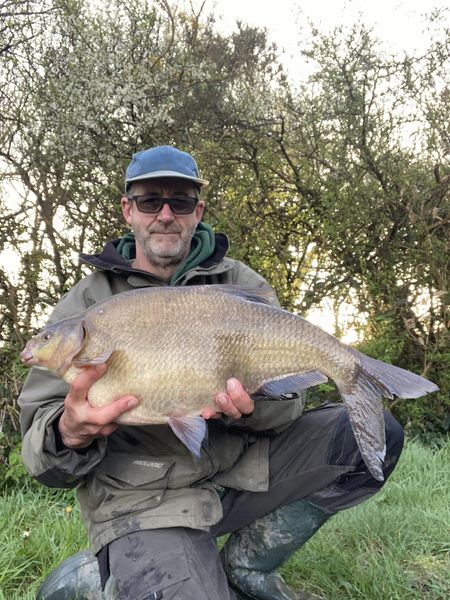
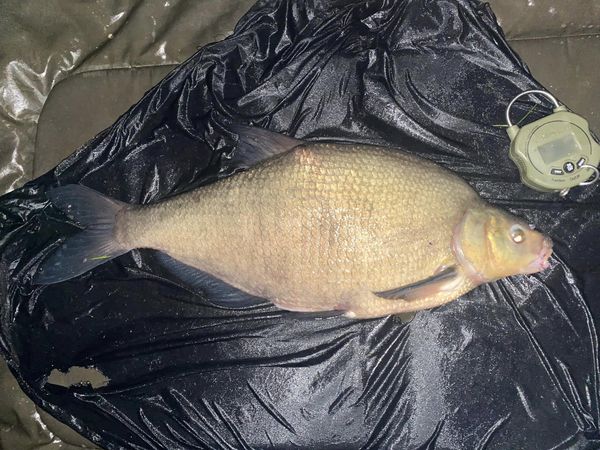
South West Lakes Trust Trout Fisheries Report – March
South West Lakes Trust Trout Fisheries Report
March 2024
The new season is now firmly under way at all of the South West Lakes Trust trout fisheries; where available, boats are now on the water, and should be pre-booked (online or via the telephone). Generally the weather for the opening month has been both mixed and challenging to anglers, with strong winds, rain, snow and hail, and cold temperatures. Fish have been feeding throughout the water column, with some already starting to feed near the surface, and many have been caught using floating line tactics. The very wet winter means that the water levels are full.
Fishing:
Kennick – Rods averaged just over 5 fish per angler over the month, with fish generally well spread out around the lake and eager to feed. Both boat and bank anglers caught fish in most locations (particularly the Top End, Clampitts Bay, the Dam and Hawthorn Point), using a variety of tactics from floating lines fishing nymphs just under the surface, to Blobs and Boobies fished on fast-sinking lines, all with a variety of retrieves. Andy Western caught a four pound rainbow, the best fish of the month.
Siblyback – The fishery continued to produce some fine fishing, with anglers averaging 3.9 fish per rod. Two Meadows, Stocky Bay, Crylla and North Bank produced the best sport, with bank anglers getting marginally better results than the boats. Dark fly patterns seemed to be preferred by the fish, with Montanas, Vivas, and Black and Gold Fritz patterns fishing well over a range of depths and with various retrieves; a few fish were even tempted to the surface to take Black Hoppers. Small hatches of buzzers produced rising fish on occasions. Benjamin Lang (from Launceston) caught one brownie and seven rainbows – the best of which was 3lb 8oz, caught on a size 14 buzzer cast to rising fish feeding off hatching buzzers off Meadows Bank. Simon Peters (from Truro) caught a bag of seven rainbows to 2lb 8oz, fishing from the East Bank, using a Black and Green Snake and a Black and Green Bunny Cat on an intermediate line.
Burrator – Again, the great start to the season continued at Burrator, with anglers averaging 5 fish per rod, with fish well spread out around the lake, particularly at Longstone, Sheepstor, Lowery, Pig Trough and Bennett’s. Floating and intermediate lines with a variety of retrieval methods (fast, slow figure of eight, washing line) all produced good sport. Hatches of buzzers and black gnats meant that fish were frequently found feeding near the surface (and occasionally caught on a Klinkhammer); however, the majority of fish were taken sub-surface on a variety on nymph (Damsels, Pheasant Tails, Buzzers and Montanas) and lure (Orange Blobs, Black Fritz, Humungous and Cats Whisker) patterns. Kevin Sellar (from Plymouth) caught twelve rainbows and a brown from the boat, fishing off Discovery Bank, then Lowery Point, Pines, Bennett’s and Narrator, using a slow intermediate line. Al Lawson (from Plymouth) caught a bag of five rainbows fishing between Lowery Point and the field, and then on to Bennett’s; Dom and Ben Garnett (from Exeter) caught four rainbows and three browns, using a Damsel Nymph at first, and then a Black spider when fish started to rise to hatching buzzers, at Narrator Bank.
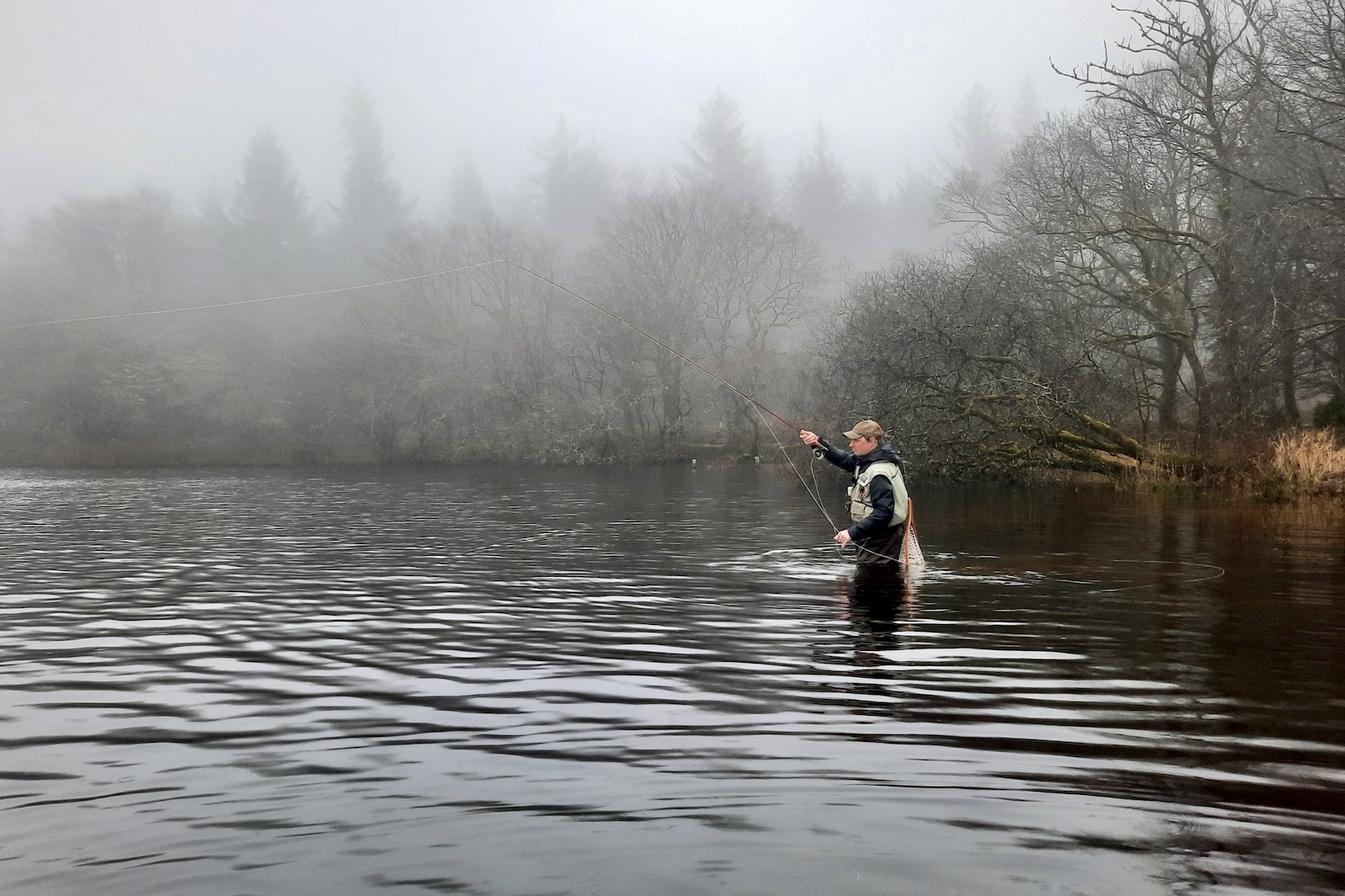
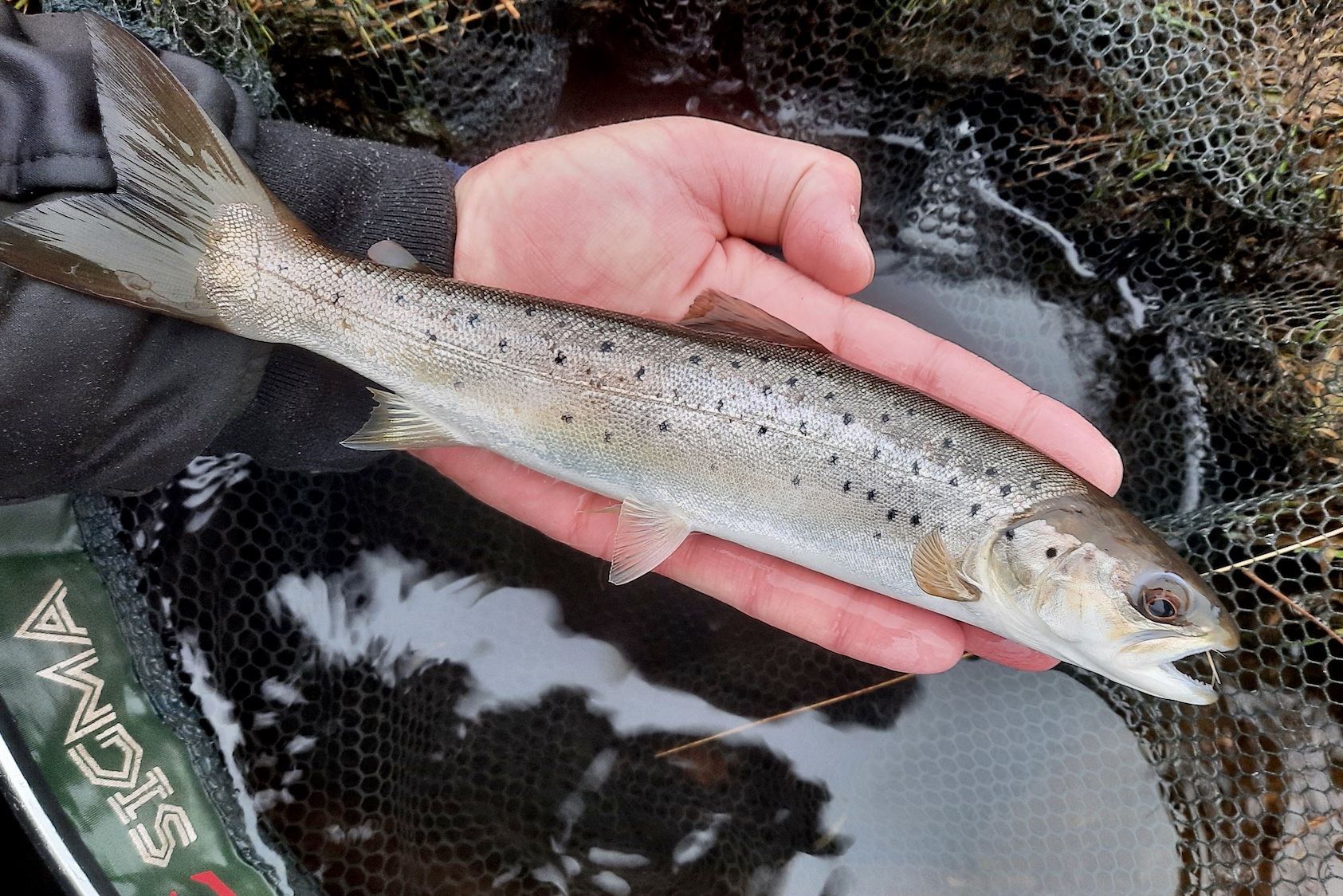
Stithians – The fishing improved as the month progressed, with anglers averaging 3.3 fish per rod. The best sport was to be had at North Bank, Yellowort, Goonlaze, Chapel Bay and Mossopps, with surface activity during the occasional buzzer hatch. Fish were caught at all depths on a wide selection of nymphs (mainly Damsel variants) and lure patterns (Orange Blobs, Cats Whiskers, Cormorants and Muddlers), with some fish rising to both Claret and Green Hoppers, as well as small parachute dry patterns and Coch-y-Bondhu. Simon Peters (from Cusgarne) caught a bag of eight rainbows in the space of an hour, pulling an Apache Lure on an intermediate line and slow retrieve, with aggressive takes; on another visit he caught five rainbows to 2lb 8oz from Deep Bank. Phillip Lockley (from Constantine) caught four rainbows using a home-tied Damsel nymph fished near the bottom.
Fernworthy – The fishing improved as the month progressed. The middle week resulted in eight anglers out of thirteen catching full bags, and an overall rod average of 2.23 fish per angler; the average then rose to 2.7 fish per rod in the final week of the month. The most successful method was a medium or slow retrieve on either a floating or intermediate line, with most fish feeding in the top six feet of water, mainly on a variety of sub-surface nymph patterns (including Diawl Bachs, Pheasant Tails, Montanas, Buzzers and Bibios), while a few fish rose to take a Daddy Longlegs from the surface. Prime locations included Permit Hut, Boat Bay, Lowton Bay and South Bank. Rodney Wevill (from Lifton) caught five browns to 1lb 4oz using a Soldier Palmer and Blue Zulu on a floating line with a medium retrieve.
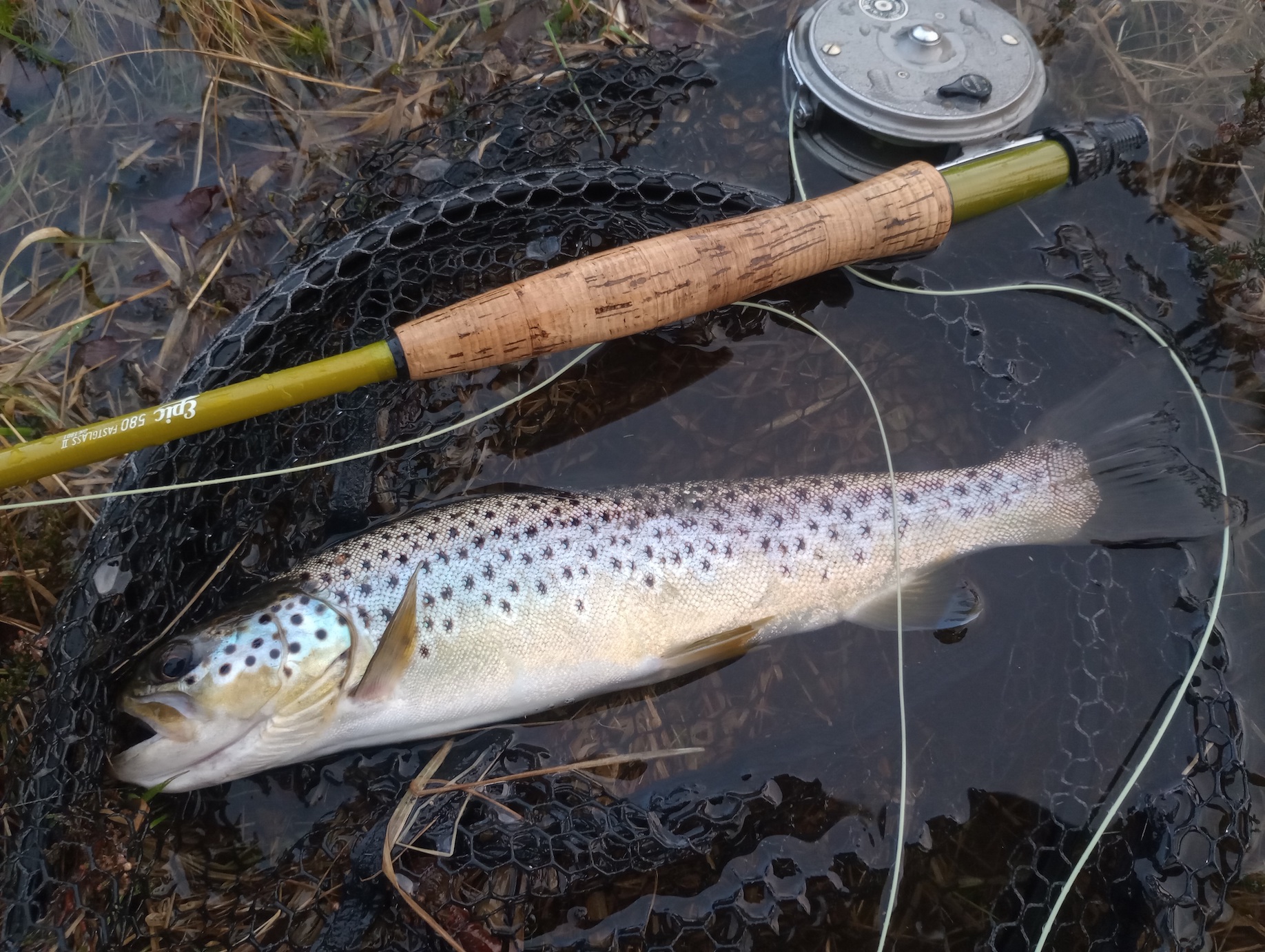
Colliford – Again, the fishing improved toward the end of the month, with rod averages rising to 3.5 fish per visit, with the best fishing to be had by the dam, Lords Waste and along the West bank. Generally floating lines with a medium or slow-jerked retrieve produced the best results, using Soldier Palmers, Muddler Minnows, Zulus and Hare’s Ear patterns. When there was a rise to hatching buzzers, small Black Gnats and Bob’s Bits both caught fish, as did Deer Hair Sedges and Daddy Longlegs patterns. Dean Boucher (from Gunnislake) opened his season with four (three overwintered) browns to twelve inches using a Black Tadpole and Zonker. Chris Tilyard (from Fraddon) caught four browns, casting a Black Gnat to fish rising to a Black Buzzer hatch, while Roger Truscott (from Liskeard) caught eighteen browns in one session. Richard Ticehurst (from Kelly Bray) caught six browns to 14” in an afternoon session, noting plenty of insect activity (tiny black terrestrials, longhorn sedges, small brown beetles, and craneflies) – he found short casts and static presentation of dry patterns for the fish to find the most successful method. Colliford is the only reservoir not yet at full capacity, being 95% full at time of writing.
Roadford – Rods averaged 3 fish per rod, with most fish caught either in the deeper water by the dam or at Grinnacombe. Generally a slowly retrieved floating line, fishing Beetles, Tadpoles or a mini Scruffy Tiger produced the best results. Jamie Gillman (from Plympton) caught ten browns up to 1lb, all using a Beetle pattern.
Please see the Trust’s website (www.swlakestrust.org.uk/trout-fishing) for more information on buying tickets, boat availability and booking, and forthcoming events. The Trust, in conjunction with Fluff Chuckers, will be running a Brown Trout Masters competition this season, to be held over three dates at Colliford, Fernworthy, and Roadford – please see the website for more information.
Chris Hall (April 2024)
ROADFORD FLY FAIR
South West Lakes Trust hosted their annual Fly Fair at Roadford where Fly anglers from all over the South West converged for this ever popular curtain raiser to a new season. A wide variety of stands represented those involved in the Fly Fishing Community. The events main sponsors were Chevron Hackles, Holmleigh Angling Centre, Catch, Snowbee and Turrall.
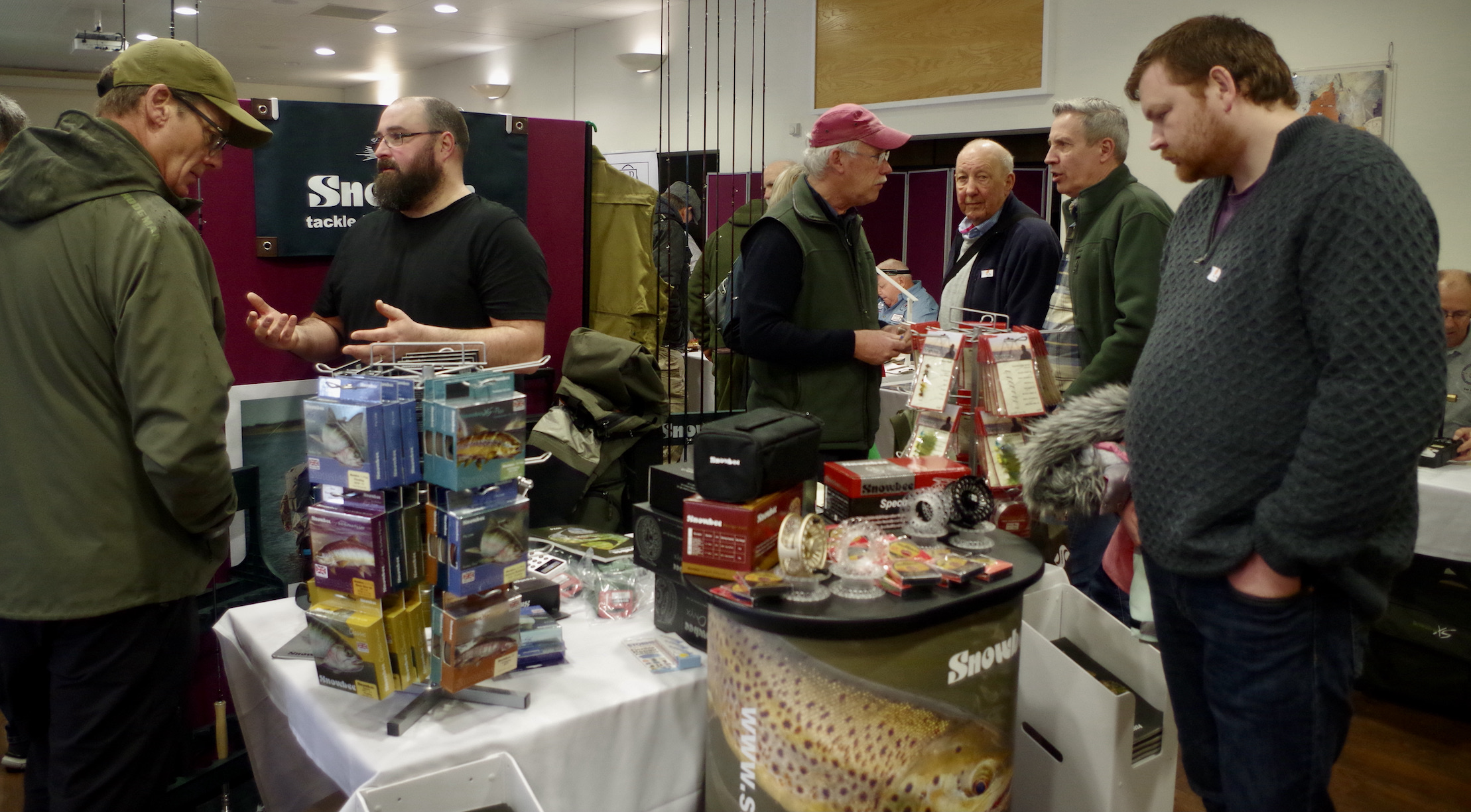
Charles Jardine opened the event stressing the need for anglers to get out fishing and support their local fisheries. He also spoke of the benefits of introducing young people into the fascinating world of fly fishing that has many positive benefits for mental health and general well-being.
Discussion flowed freely throughout the day with many plans set for the coming season. The long wet winter has undoubtedly impacted upon winter fishing with those fly anglers seeking sport with grayling and pike having a difficult time with only short periods when conditions were suitable to visit the water’s edge.
There has been considerable change over recent seasons as society has been impacted upon by Brexit, Covid and the cost of living crisis. Angling and fly fishing has of course been affected by all of this but it is perhaps even more important that our pastime thrives to bring much needed sanctuary from this gloom laden world.
Fly fishing has long been seen as a rather elitist branch of angling and when I started casting a fly fifty years ago the art of fly casting was still to some extent seen as a sport for the gentry.
The boom in Stillwater trout fishing during the 1970’s broke down these social barriers to some extent as a wider section of society enjoyed catching rainbow trout stocked into water supply reservoirs.
I remember being thrilled to catch the occasional limit bag of trout when I started out with the fish averaging around 1lb. As fisheries spread competition increased and small still-waters started opening stocking ever larger trout. Into the 1980’s and 1990’s double figure rainbow trout became a regular feature with some fisheries stocking fish to over 20lb.
This increasingly artificial commercial fishing resulted in ever increasing expectations from anglers. Another factor that perhaps influenced stocking was a significant increase in cormorant populations across reservoirs. The stocking of rainbows under 1lb 8oz became unviable as smaller trout were simply mopped up by these predatory birds.
Covid impacted upon us all but there was an initial post covid boom in fishing as anglers escaped to the great outdoors to enjoy a pastime that offered a safe environment. The value of fishing to mental health became much appreciated and for a time it seemed fly fishing was in a good place.
Sadly, the cost of living and angler’s unrealistic levels of expectation has resulted in an unsustainable situation. The spiralling cost of fish food and hot summers has impacted upon the farms that provide stock fish. The result is that fisheries are forced to pass the costs onto customers. In a cost of living crisis, it is very much a case of the survival of the fittest and as a result we are seeing the collapse of some fisheries Draycote Water in the Midlands being a case in question.
So having painted a rather gloomy picture of the fly fishing world in this country I will now look for those proverbial green shoots.
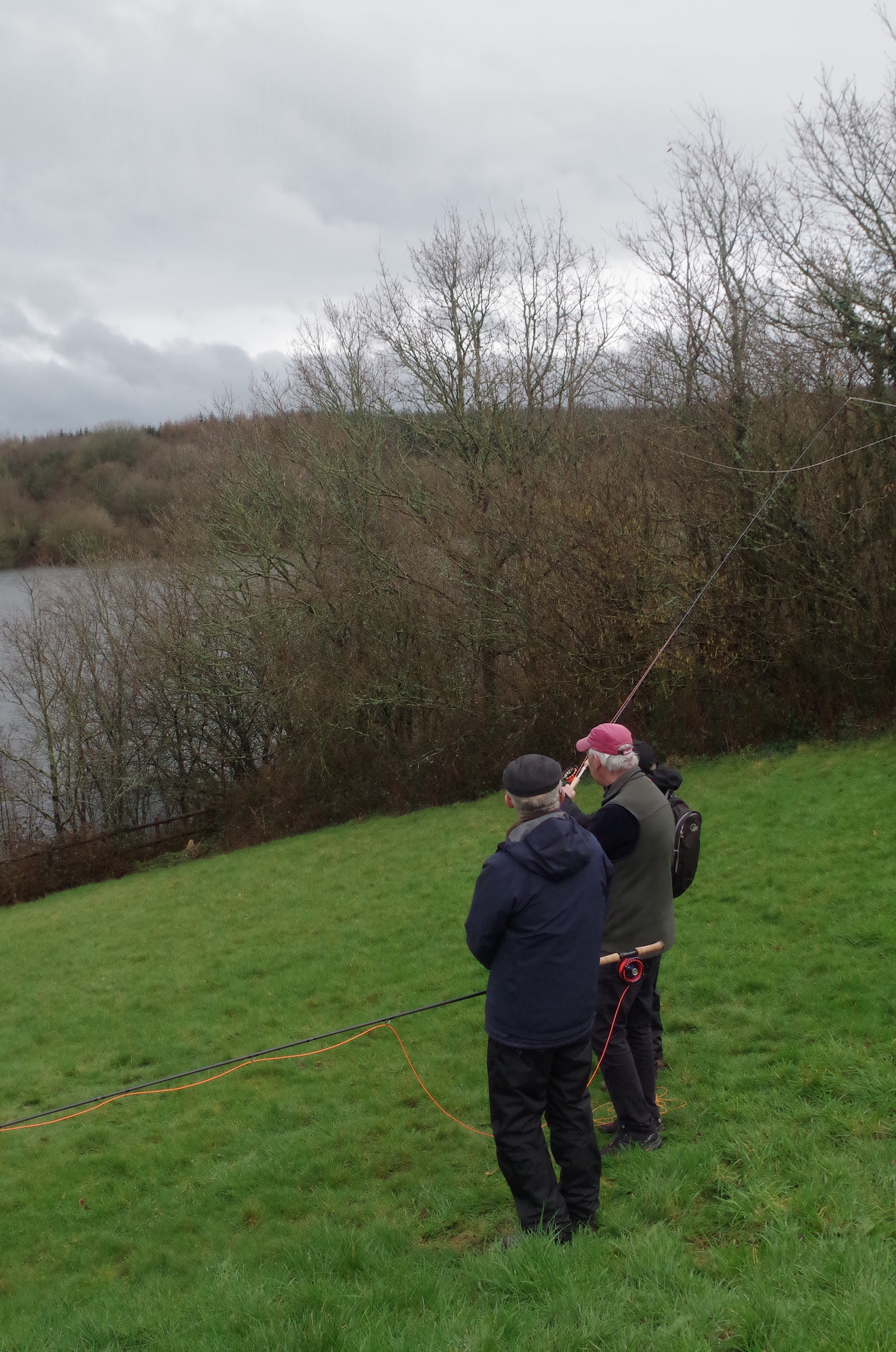
This year’s fly fair brought together a wide dynamic of anglers from the West Country Fly Fishing scene. With a new season ahead, there was undoubtedly a positive and optimistic drive as the leaders of this pastime urged us to get out fishing and support our local fisheries.

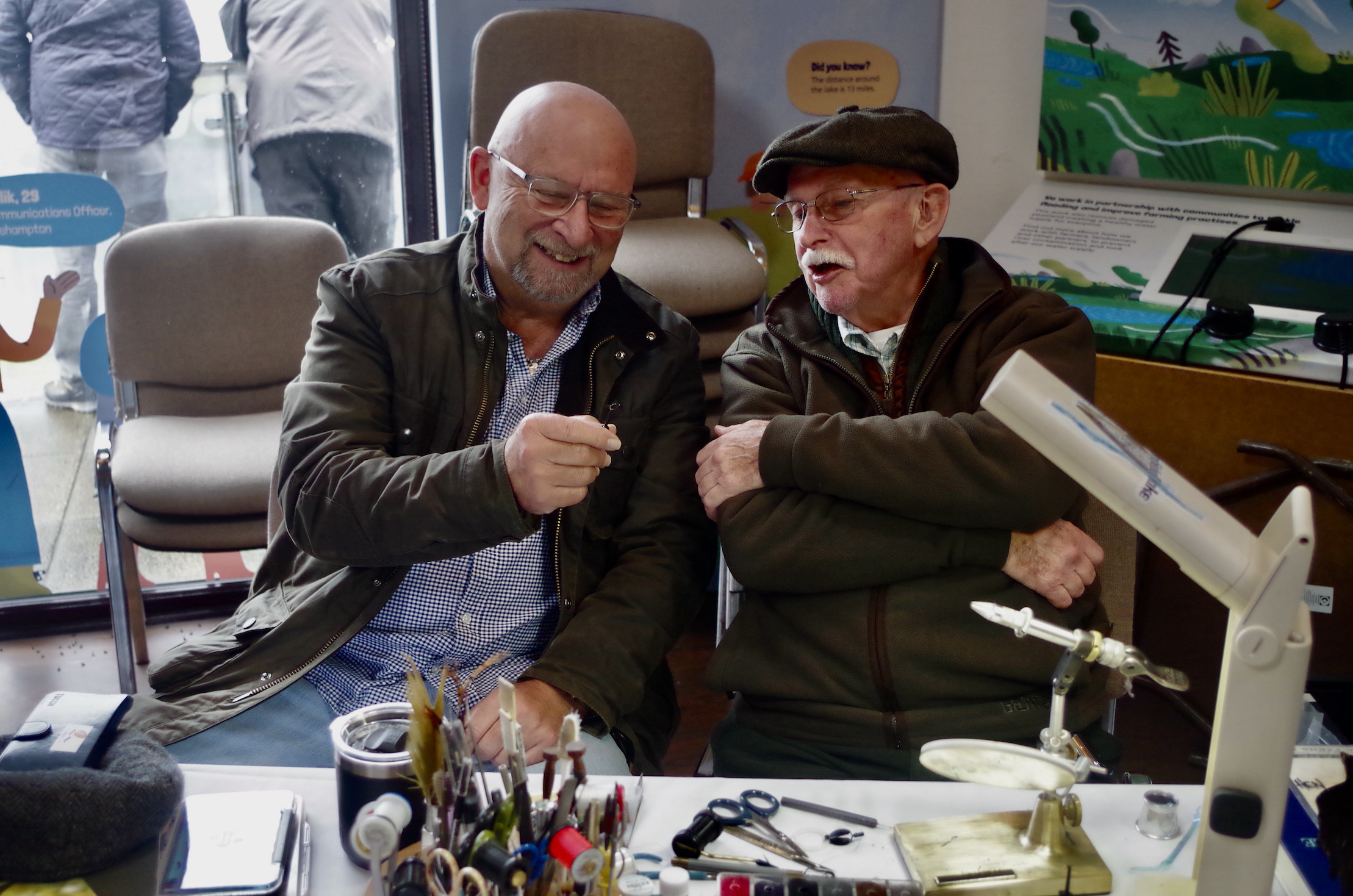
Concern for the environment was evident with fishery associations promoting their waters that are often surprisingly cheap alternatives to the commercial waters.
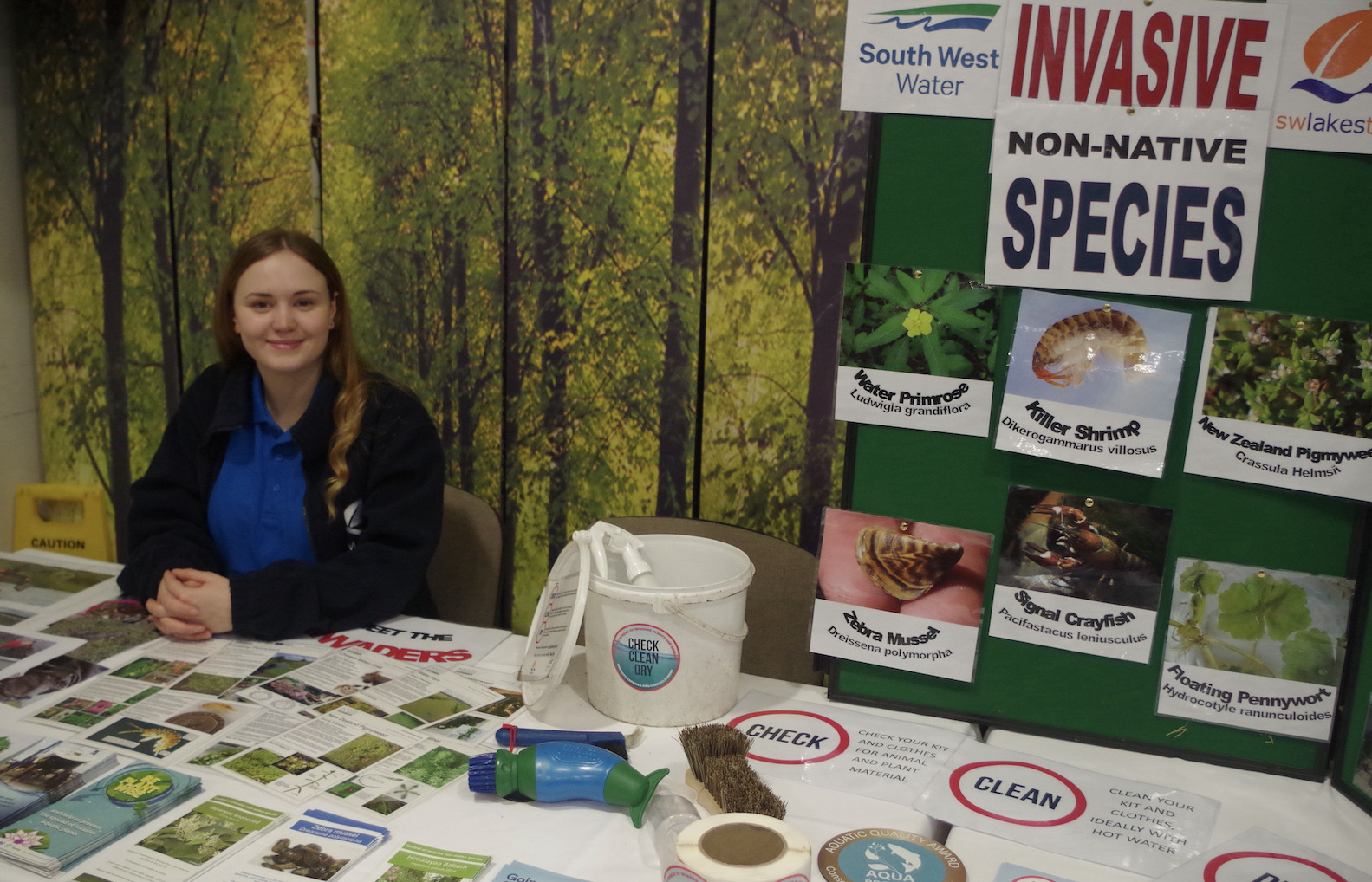
Companies like Catch and Fish Pass are now offering a new way to buy day permits using the latest mobile phone technology.
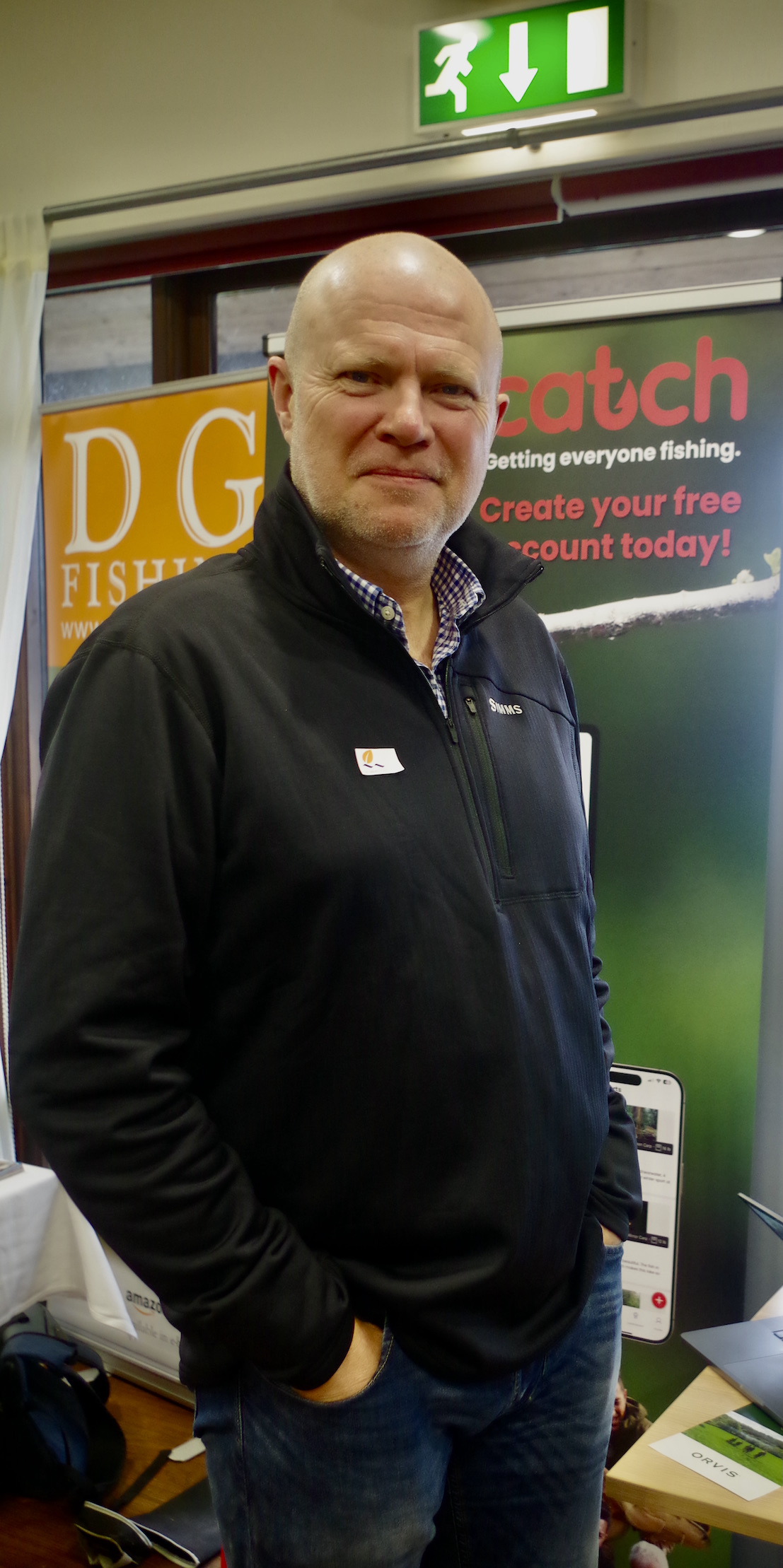
In contrast to the modern world traditional craftsmen like Luke Bannister were at hand to display magical wands of split cane that add sweet perfection to an angler’s day.
I took pleasure in introducing Michelle Werrett whose new book Song of the Streams is enchanting readers to fellow author Mike Weaver whose writing has delighted West Country anglers for many decades. His book In Pursuit of Wild Trout published in 1991 is a classic tome that is timeless in its validity.
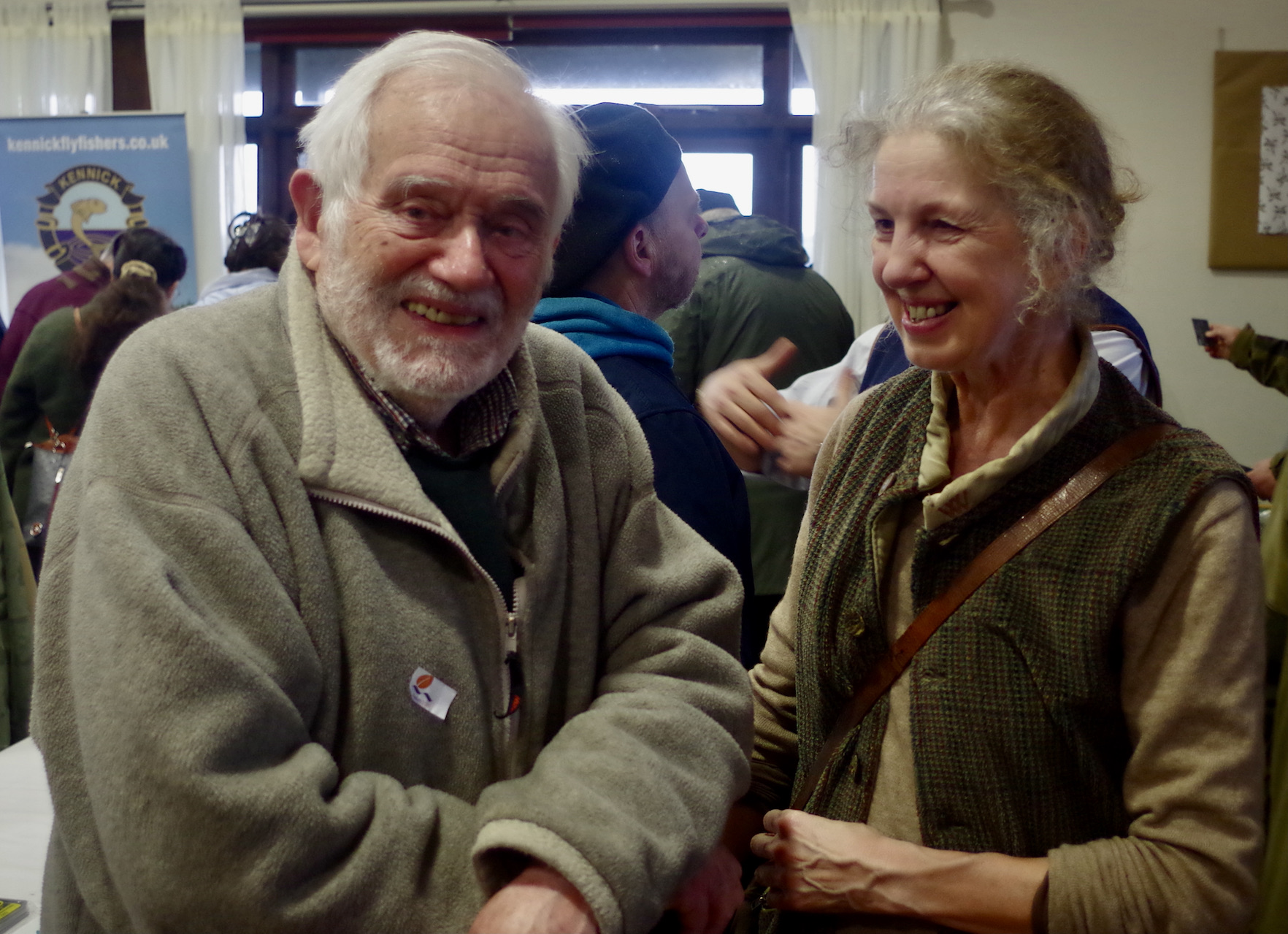
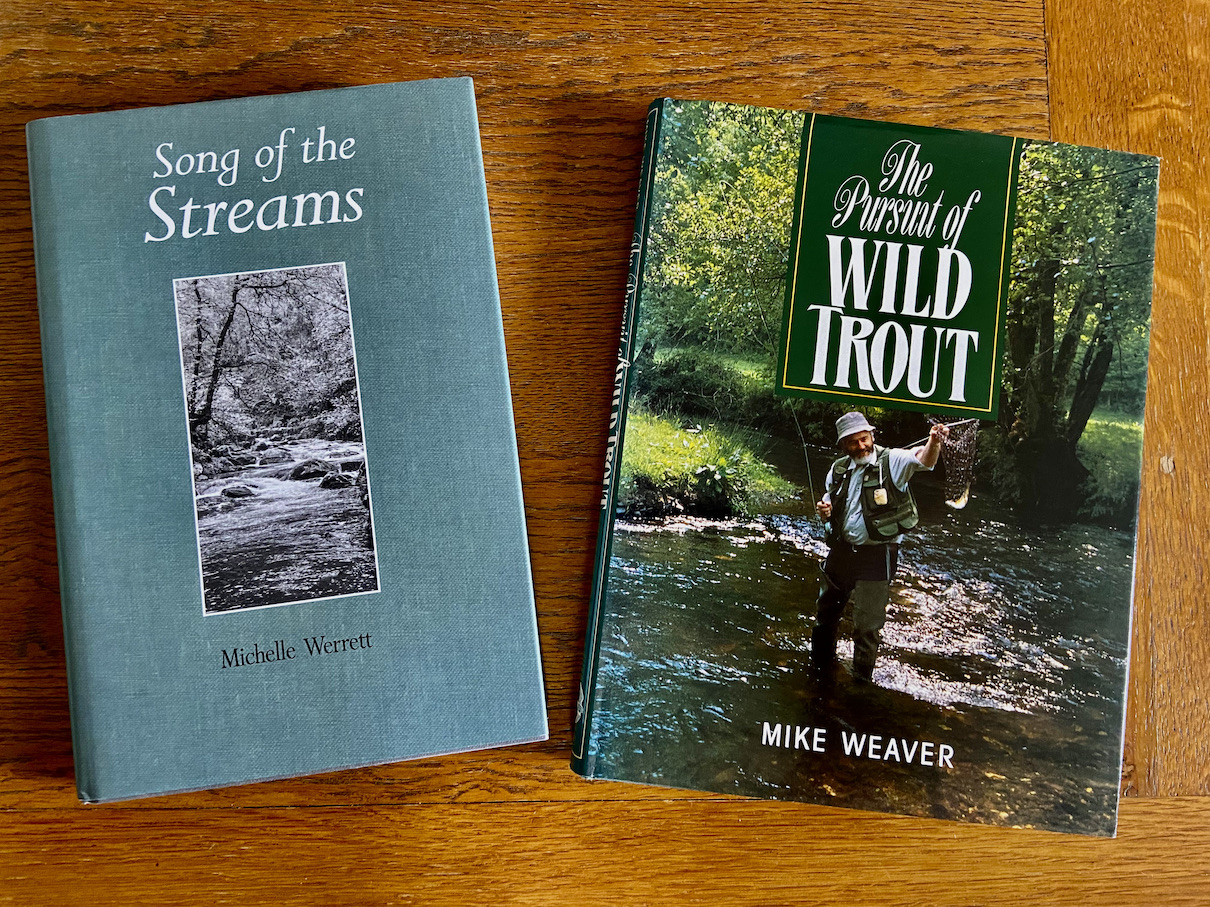
The West Country has a wealth of wild streams that offer exciting fishing for wild brown trout and a sadly diminishing number of salmon and sea trout. Adrian Bryant has been promoting the excellent film Riverwoods across the region and I joined him in presenting a short preview of this film giving my own brief view on the tragic decline of salmon.
Chatting with many at the Fly Fair it was apparent that there is a willingness to adapt and there are signs that new thinking is starting to break down the barriers of tradition. There is a growing desire to fish for varied species across different waters.

Pike from large stillwater’s and canals are an increasingly reported trend. Perch, rudd and carp are also gaining a following with Dominick Garnett columnist for the Angling Times giving a thought provoking talk on fly fishing for coarse fish. There is also an increasing number of anglers targeting sea fish with bass and mullet offering exciting sport during those hot months of summer when the trout are dwelling deep down in the reservoirs.
There are those who taking fly fishing into cross over territory with LRF with talk of using squirmy flies employed to catch blennies and other species from rock pools using 2 wt. rods more often used to target wild brown trout in moorland streams.
The definition of Fly Fishing on Wikipedia is “ Fly fishing is an angling technique that uses an ultra-lightweight lure called an artificial fly, which typically mimics small invertebrates such as flying and aquatic insects to attract and catch fish.”
This differs somewhat to my own thoughts where I had always believed fly fishing to be a technique that involves projecting the fly to the fish using a line as the weight. The traditional casting styles were entrenched within my mind set. But I now see an unfurling world of unorthodox presentations as anglers dibble and jig their flies or lures.
This is a world far from those days captured within the classic tomes depicting Fly Fishing on the revered chalk streams of England. Surely though there is room for all as our splendid pastime evolves as it always has?
We are living in times far removed from those of Halford whose doctrine of the Upstream Dry Fly stimulated debate within the world of the wealthy and privileged during Victorian Times.
I returned home from this year’s fly fair full of enthusiasm for the coming season with plans made that this year I really must try to make happen.

Many thanks to Ashley Bunning and all at South West Lakes Trust for hosting a fabulous fair.




